

Teach social problem solving
For student year, helps students to.
- solve social problems
- become independent
Helps teachers to
- support students
- model strategies
Social problem solving is a skill that develops during the early years of school. It is the process and strategies used to analyse, understand, and respond to everyday problems, decision making, and conflicts.
Social problem solving is often fostered intuitively through interactions with others. Some students, including those on the autism spectrum, may benefit from systematic instruction in helpful strategies for social problem solving.
Social problems can be as simple as turn-taking, and as complex as bullying.
Instruction helps students to understand:
- what a social problem is
- how to recognise a social problem
- the process to follow when a social problem occurs, and
- the strategies they could use to solve a social problem.
How the practice works
Watch this video to learn more about this practice.
Duration: 03:49
Australian Professional Standards for Teachers related to this practice
1.6 - strategies to support the full participation of students with disability
4.1 - support student participation
4.2 - manage classroom activities
4.3 - manage challenging behaviour
For further information, see Australian Professional Standards for Teachers AITSL page
Join the inclusionED community
View this content in full by creating a free account..
Already have an account? Log in
Preparing to teach
Be proactive.
- Identify barriers to learning and social demands and put these strategies in place to reduce the likelihood of problems occurring in the first place.
- Use observations to develop a clear and comprehensive understanding of the problem(s) that the student is experiencing.
- understand possible triggers
- be alert to any potentially challenging situations throughout the day.
- Identify the specific strategy to teach students how to find a solution. There are several strategies available in the Resources section below.
- as a whole class
- in small groups
- individually
- a mix of above.
Use supports
- Identify and develop the visual supports required to explicitly and systematically teach a social problem solving process and keep these handy. These can be social stories, routine charts, or emotion cards for self-regulation.
- Identify appropriate storybooks and visual supports that you can incorporate in your explicit teaching to enhance student understanding.
- role-play/rehearsal
- puppet play (check the students aren’t frightened of puppets)
- social stories
- visual prompts.
How will you:
- embed problem solving scenarios
- model the problem solving process
- positively encourage, support, and reinforce students to use the process to solve real-life social problems
- share the social problem solving process with families.
Communicate
Communicating with families will encourage generalisation of the associated strategy at home. You can also communicate the types of language used so families can use similar language at home if they like.
The turtle technique
When you have a clear understanding of the problem the student is experiencing, you can then identify and use a specific intervention process to teach the student how to find a solution. One such process is the turtle technique. This involves teaching students the steps of how to control feelings and calm down (i.e., think like a turtle).
You will find further templates in the resource section of this practice.
It works better if:
- the social problem solving strategy has a small number of set steps
- teachers model these steps
- students are encouraged to use to the strategy to solve their social problems whenever they occur
- language is used consistently and modelled throughout the day and at home
- visual supports are used to enhance student understanding of the strategy.
It doesn’t work if:
- the student is expected to solve a social problem when distressed or overloaded
- the student hasn’t understood the problem solving strategy (so it will need re-teaching)
- the problem solving strategy has too many steps.
In the classroom
Step 1: teach social problem solving.
Explicitly and systematically teach a social problem solving strategy using visual supports. These are available in the resources section.
You notice student A becomes frustrated when they others don't want to play the same game. You can introduce the concept of turn-taking, and establish strategies for students to determine whose turn it is, promoting fairness and equality. Student A can then independently use these strategies when this comes up again.
Step 2: Practice relaxation
Ensure that class practises relaxation skills.
Step 3: Embed and respond
Be alert to any situations throughout the day that may result in social difficulties.
Model using the strategy to solve social problems.
Support student use of the strategy in relation to their encountered social problems:
- remain calm – personally model the skills involved
- reduce ‘talk’ and use visual cues
- deal with social difficulties in a consistent manner.
Acknowledge and positively reinforce all attempts by student to use problem-solving skills.
Step 4: Review
Wait until the student is calm and receptive before providing feedback.
Step 5: Reflect
Reflect on whether the student was able to solve the social problem independently, or whether the strategy needs to be adjusted.
Record student outcomes in order to track progress.
Note program outcomes.
Practice toolkit
Practice implementation planner template.
We know that it is not always easy to keep track of what is working and what is not. So, we have created this template for you to record and reflect on what you are doing to help you create a more inclusive classroom. The implementation planner contains:
- Guidance around goal setting
- Reflection section (What worked, didn’t work and what to change and next steps.)
- Prompting questions
Implementation planner template
Implementation planner with examples
Set your professional learning goal for:, benefits of goal setting.
- Goal setting guidelines
- Importance of goal setting
How to set goals
Teach social problem solving - practice brief.
Turtle Technique – 4 step problem solving process
Suri spider social story - by ncpmi, example visual support - how to choose, example visual support: playing 'round the world, example visual support: playing handball, related practices.

Model positive interactions
Teaching practice, for student years.
- build social-awareness
- interact with others
This practice is from the core research project
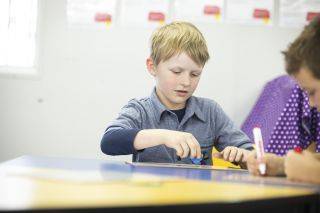
Learning Cycle
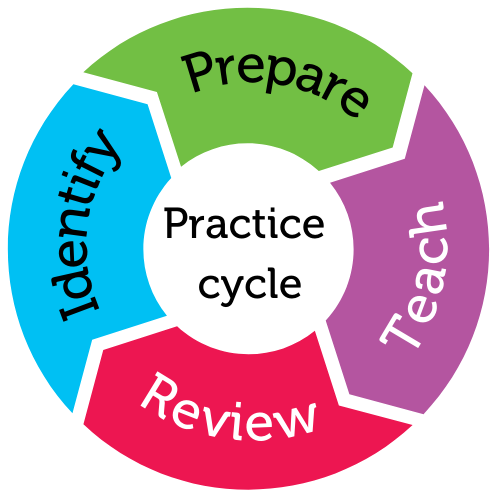
Set your practice implementation goal
Social Skills Training for Adults: 10 Best Activities + PDF

Struggles with social skills in adulthood can cause avoidance of social situations and interfere with building long-lasting relationships.
Providing social skills training to clients with anxiety, fear of public speaking, and similar issues could ensure more optimal functioning.
This article provides strategies and training options for the development of various social skills. Several resources to help target specific struggles related to the development of social skills in adults are also included, and the approaches can be tailored to improve social responses in specific domains.
Before you continue, we thought you might like to download our three Positive Psychology Exercises for free . These science-based exercises will explore fundamental aspects of positive psychology including strengths, values, and self-compassion, and will give you the tools to enhance the wellbeing of your clients, students, or employees.
This Article Contains:
Social skills training for adults explained, social skills coaching: 2 best activities, role-playing exercises: 4 scripts & examples, top 2 resources & worksheets, 4 insightful videos & podcasts, positivepsychology.com’s helpful tools, a take-home message.
Social skills training includes interventions and instructional methods that help an individual improve and understand social behavior. The goal of social skills training is to teach people about verbal and nonverbal behaviors that are involved in typical social interactions (“Social,” n.d.).
Social skills training is usually initiated when adults have not learned or been taught appropriate interpersonal skills or have trouble reading subtle cues in social interactions. These instances can also be associated with disorders that impede social development, such as autism.
Therapists who practice social skills training first focus on breaking down more complex social behaviors into smaller portions. Next, they develop an individualized program for patients, depending on what social skills they need to work on, and gradually introduce those skills to their patients, building up their confidence through gradual exposure.
For instance, a person who has trouble making eye contact because of anxiety in social situations might be given strategies to maintain eye contact by the therapist. Eye contact is the foundation for most social interaction, and interventions will often start with improving the individual’s ability to maintain eye contact.
During therapy, other challenging areas will be identified such as starting or maintaining a conversation or asking questions. Each session will focus on different activities that typically involve role-play and sometimes will take place in a group setting to simulate different social experiences.
Once confidence has been built up during therapy or social skills group settings, these social skills can be brought into daily life.
Useful assessments: Tests, checklists, questionnaires, & scales
Before engaging your clients in social skills interventions or any type of therapeutic intervention, it is important to determine if social skills therapy is a good approach to help them with their current situation.
The Is Social Skills Training Right for Me? checklist is a self-assessment opportunity for clients to determine if social skills therapy is appropriate for their specific situation or if another approach will be more beneficial.
However, self-assessment activities can sometimes be unreliable, as the individual might not fully understand the treatment models that are available to them. Additionally, if a client has issues with social skills, they may not be aware of their deficiencies in social situations.
In these situations, therapists should ask clients about the issues they are having and encourage them to engage in self-questioning during sessions.
9 Questions to ask your clients
Prior to starting social skills training or activities, the therapist and client should narrow down which areas need help. A therapist can do this by asking the client a series of questions, including:
- Where do you think you are struggling?
- Are there any social situations that make you feel anxious, upset, or nervous?
- Do you avoid any specific social situations or actions?
- Have you ever had anyone comment on your social behavior? What have they said?
- What do you think will help you improve the skills you are struggling with?
Clients can also ask themselves some questions to determine if the social skills therapy process is right for them.
These questions can include:
- What aspects of my life am I struggling with?
- Are there specific social situations or skills that I struggle with?
- Do I have trouble keeping or maintaining relationships with friends, family members, and coworkers?
- Am I avoiding specific social situations out of fear?
Getting clients to ask these questions will help determine if this process will benefit them. Having clients “buy in” to the process is important, to ensure that the approach is right for them and increase the likelihood that they will be engaged to complete activities with a reasonable degree of efficacy.

It is estimated that adults make eye contact 30–60% of the time in general conversation, increasing to 60–70% of the time when trying to form a more intimate relationship (Cognitive Development Learning Centre, 2019).
Giving people who are struggling socially the tools to make more eye contact is usually the first step in social skills training exercises.
The Strategies for Maintaining Eye Contact worksheet provides some practical strategies and tips to practice making eye contact.

Download 3 Free Positive Psychology Exercises (PDF)
Enhance wellbeing with these free, science-based exercises that draw on the latest insights from positive psychology.
Download 3 Free Positive Psychology Tools Pack (PDF)
By filling out your name and email address below.
Often, one of the most prominent struggles for people lacking social skills is starting a conversation, especially with people they are not familiar with.
Fleming (2013) details a helpful method for people who struggle with starting conversations. The ARE method can be used to initiate a conversation and gain an understanding of the person’s interests to facilitate a strong relationship.
- Anchor: Connect the conversation to your mutually shared reality (e.g., common interests) or the setting in which you encountered the individual.
- Reveal: Provide some personal context to help deepen the connection between you and the other person.
- Encourage: After giving them some context, provide the other person with positive reinforcement to encourage them to share.
This worksheet Starting a Conversation – The ARE Method guides participants through each step in the ARE process. It also provides examples of how the ARE method can be incorporated into a typical conversation and used as a workable strategy in social skills training activities.
A Guide to Small Talk: Conversation Starters and Replies provides an outline of conversation ideas to help start any conversation, no matter the setting.
After developing the ability to start a conversation, being able to project assertiveness and understand one’s limits is essential in ensuring clear communication.
These worksheets on Different Ways to Say ‘No’ Politely and Using ‘I’ Statements in Conversation facilitate assertive communication and give clients the confidence to set personal limits.

A lack of opportunity to learn coping strategies and difficulty with emotional regulation have been associated with anxiety and low problem-solving abilities (Anderson & Kazantzis, 2008).
An individual’s lack of ability to problem solve in social situations significantly affects their ability to come up with reasonable solutions to typical social problems, which in turn, causes them to avoid more difficult social situations.
Practicing social problem solving is a key component of social skills training. This worksheet on Social Problem Solving allows your clients to define the problems they are facing and rate the potential solutions from low to high efficacy.
Based on the rating, therapists can instruct clients to practice their social reasoning during sessions. Practicing these skills builds clients’ confidence and increases the likelihood that they will access these solutions under pressure.
Similarly, the Imagining Solutions to Social Problems worksheet implements a related process, but challenges participants to engage in a visualization activity. While engaging in visualization, participants have the opportunity to imagine what they would say or do, and reflect on what they have learned and why the solution they chose was best for that particular problem.
Supplementing modeling and practical activities with interactive audio-visual aids, such as podcasts and videos, is an essential practice in ensuring that patients seeking social skills training are getting multiple perspectives to develop their social intelligence.
Below, we have provided resources to help your clients with different social skills and situations.
An introvert’s guide to social freedom – Kaspars Breidaks
This TEDx talk focuses on providing guidelines for self-identified introverts. In this video, Breidaks frames introversion as an opportunity, rather than a weakness.
Based on his experiences moving from a small town to a big city and eventually starting improv comedy, he developed a workshop to help integrate principles of improvisation into social skills training.
His workshops focus on creating connections through eye contact and breaking through shyness by training the small talk muscle. Because of his experience, he recommends you say yes to yourself before saying yes to others. Breidaks theorizes that only by developing our awareness of our own true emotions and thoughts can we become more comfortable interacting with others.
This video is helpful if your patients need workable tips to improve their interactions with strangers and is an excellent complement to some of our worksheets on developing skills for small talk.
10 Ways to have a better conversation – Celeste Headlee
This TEDx talk is focused on tactics to have more effective conversations. In her TED talk, Headlee emphasizes the importance of honesty, clarity, and listening to others as well as yourself.
Headlee shares her ideas about how to talk and listen to others, specifically focusing on sustaining clear, coherent conversation and the importance of clear, direct communication.
She argues that technology has interfered with the development of interpersonal skills, stating that conversation is an art that is fundamentally underrated and should be emphasized more, especially among young children.
The main point Headlee tries to get across is to avoid multitasking and pontificating during conversation. Individuals who are struggling with active listening and keeping a conversation going would benefit from the tips she offers in this video, as she uses a lot of the same principles when interviewing her radio guests to ensure that she is getting the most out of their appearances.
She specifically emphasizes the importance of being continually present while talking and listening to someone, which is strongly emphasized in social skills training.
How Can I Say This – Beth Buelow
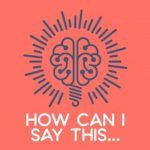
Each episode also provides techniques or approaches to help listeners become more confident when dealing with different social situations. The podcast also takes listener questions about dealing with social situations and issues.
If your clients are struggling with introducing themselves to new people, they may benefit from the episodes on talking to strangers and how to have difficult conversations.
Available on Spotify and Apple Podcasts .
Social Skills Coaching – Patrick King
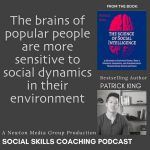
King focuses on using emotional intelligence and understanding human interaction to help break down emotional barriers, improve listeners’ confidence, and equip people with the tools they need for success.
Although King’s expertise is centered on romantic relationships, this podcast provides strategies to improve one’s emotional awareness and engage in better communication.
People engaging in social skills training would benefit from the episode on social sensitivity, which examines the social dynamics of the brain. It also explains why our brains are programmed to respond more to specific traits (e.g., warmth, dominance) and why people with those traits are often elevated to higher positions within the social hierarchy.
Available on Apple Podcasts .

17 Top-Rated Positive Psychology Exercises for Practitioners
Expand your arsenal and impact with these 17 Positive Psychology Exercises [PDF] , scientifically designed to promote human flourishing, meaning, and wellbeing.
Created by Experts. 100% Science-based.
There are several resources available on our website to complement the social skills training that you are providing to your clients.
Our Emotional Intelligence Masterclass© trains helping professionals in methodology that helps increase their client’s emotional intelligence.
The client workbook has several exercises that practitioners can give their clients to develop an awareness of their emotions and, subsequently, understand how those emotions might contribute to interactions with others.
Our Positive Psychology Toolkit© provides over 400 exercises and tools, and the Social Network Investment exercise, included in the Toolkit, focuses on reflecting on a client’s current social network. By further looking into the amount of time and investment devoted to the members of their social network, clients can further identify who is supportive of their endeavors and who negatively affects experiences.
With this knowledge, relationships can be analyzed before devoting even more time and investment that might not facilitate positive emotions.
People who struggle with initiating conversation might also have trouble talking about their emotions. Our exercise on Asking for Support , also in the Toolkit, can provide assistance to someone having trouble communicating their emotions.
It also provides strategies to practice asking for help when needed. This exercise also gives you the opportunity to identify any personal barriers that are impending your ability to seek help from others.
You might be interested in this sister article, Social Skills Training for Kids , which provides top resources for teachers. To enhance your knowledge, our Social Skills Books for Adults & Kids is a must-read selection of top books.
If you’re looking for more science-based ways to help others enhance their wellbeing, this signature collection contains 17 validated positive psychology tools for practitioners. Use them to help others flourish and thrive.
Improving social skills is an important skill to develop for anyone trying to facilitate professional and personal connections.
However, sometimes clients might not even realize they need targeted interventions to help with their social skills, and they might approach a therapist with other challenges around anxiety entering new situations.
For that reason, we hope this article provided valuable options for the development of social skills, with useful activities and social skills worksheets to be incorporated into your sessions.
We encourage you and your clients to explore these exercises together and engage in goal-setting tools to target areas that will benefit their daily lives, relationships, and communication.
We hope you enjoyed reading this article. Don’t forget to download our three Positive Psychology Exercises for free .
- Anderson, G., & Kazantzis, N. (2008). Social problem-solving skills for adults with mild intellectual disability: A multiple case study. Behaviour Change , 25 (2), 97–108.
- Cognitive Development Learning Centre. (2019). Training eye contact in communication . Retrieved May 4, 2021, from https://cognitive.com.sg/training-eye-contact-in-communication/
- Fleming, C. (2013). It’s the way you say it: Becoming articulate, well-spoken and clear (2nd ed.). Berrett-Koehler.
- Social skills training. (n.d.). In Encyclopedia of mental disorder. Retrieved May 4, 2021, from http://www.minddisorders.com/Py-Z/Social-skills-training.html
Share this article:
Article feedback
What our readers think.
Hello, I am trying to open the link to the ARE-method but am unable to.
Please try to access the worksheet here .
If you experience further issues with accessing the link, please let me know!
Warm regards, Julia | Community Manager
Sounds so good for my young adult. Do you know of any in person sessions, workshops, which would benefit him being in person.
I would like to know what the best book to get for my husband for him to learn social skills conversations. Thank You
check out our article “ 12 Must-Read Social Skills Books for Adults & Kids “.
Hope this helps!
Kind regards, Julia | Community Manager
Are there any online classes for people suffering with anxiety, Aspergers and a lack of social skills? This is a great article, but there are no therapists who teach social skills. These are skills that come from parents. Like me, when you have no parent or friends to teach you, what do you do? Please make an online course. I would pay to watch a course and even buy materials.
Thank you for your thoughtful comment and interest in an online course addressing anxiety, Aspergers, and social skills. I understand how challenging it can be to find the right resources, especially when traditional sources of support may not be readily available.
While we don’t currently offer an online course, we are happy to recommend a helpful resource that cater to individuals experiencing similar difficulties: Psychology Today has a great directory you can use to find therapists in your local area. Usually, the therapists provide a summary in their profile with their areas of expertise and types of issues they are used to working with.
I hope this helps.
Hello, I just found out about this website today and this is the exact type of service I need. I unfortunately cannot find any one like this that is near me or accept my insurance. And I need this fast since my quality of life is so bad, I have severe social anxiety, and never had friends or a relationship.
Hi there a lot of the links don’t work in this article? How can I access the resources?
Thanks for your question! We are working on updating all the broken links in our articles, as they can be outdated. Which specific resource are you looking for?
Maybe I can help 🙂
Kind regards, -Caroline | Community Manager
Living socially isolated, getting told I have autism ad the age of 33, I found out that I have a lot to learn about being social with people. Now knowing what my “ problem” is also gave me the drive to improve my people skills. Fearing I willing never fully understand feelings ( not even my own) all help is welcome. And this was a very helpful article. Living in a world with tips and tricks to look normal will never be easy. But you sure help me .. thank you..
AMAZING work.. .as always. Thank you !
Thank you Gabriella social skills have been a real issue for me for my whole life. There are so many helpful avenues to explore thanks this article.
Steven Cronson My brothers didn’t consider me an Aspie and made a pact to ignore me , block me I hadn’t even learned many social skills my brother a psychiatrist tried by giving me ptsd and gad a Divorce to try to get me to end my life. My wife proudly fought back and figured out how better to understand me. And I fought the awful had medicine Lexapro that I consider the devil in a pill that made me flat and losing my superpower focusing ability. I hope a producer latched on to my fascinating story of greed, over good, attack on my very life and a brother doctor that should never been one. My dad a psychiatrist made me a DDS to be respected and listened to but not even work and married off in a fake but better life. They accused me an Aspie blind to empathy. B
I’m sorry to read about your challenges with your family. It’s good that you have what sounds like a supportive ally in your wife. And indeed, medications don’t work for everyone — or it may be the case that a different medication may suit you better. Definitely raise these concerns with a trusted psychiatrist if you feel medication could help you.
As you note, it’s a harmful myth that those on the autism spectrum don’t feel empathy. And this myth unfairly stigmatises members of this community. I’m sorry to read about these accusations from your family.
On another note, if you’d like to work on your social skills, consider reaching out to support groups for those with Aspergers in your area, or seeking the support of a therapist with expertise in this area. Psychology Today has a great directory you can use to find therapists in your local area. Usually, the therapists provide a summary in their profile with their areas of expertise and types of issues they are used to working with.
I hope this helps, and I wish you all the best.
– Nicole | Community manager
Let us know your thoughts Cancel reply
Your email address will not be published.
Save my name, email, and website in this browser for the next time I comment.
Related articles

EMDR Training & 6 Best Certification Programs
Eye Movement Desensitization and Reprocessing (EMDR) therapy has gained significant recognition for its effectiveness in treating trauma-related conditions and other mental health issues (Oren & [...]

Learning Disabilities: 9 Types, Symptoms & Tests
Albert Einstein, Winston Churchill, Sylvester Stalone, Thomas Edison, and Keanu Reeves. What do all of these individuals have in common? They have all been diagnosed [...]

Best Courses for Counselors to Grow & Develop Your Skills
Counselors come from a great variety of backgrounds often with roots in a range of helping professions. Every counselor needs to keep abreast of the [...]
Read other articles by their category
- Body & Brain (53)
- Coaching & Application (58)
- Compassion (25)
- Counseling (51)
- Emotional Intelligence (23)
- Gratitude (18)
- Grief & Bereavement (21)
- Happiness & SWB (40)
- Meaning & Values (26)
- Meditation (20)
- Mindfulness (44)
- Motivation & Goals (46)
- Optimism & Mindset (34)
- Positive CBT (30)
- Positive Communication (22)
- Positive Education (48)
- Positive Emotions (32)
- Positive Leadership (19)
- Positive Parenting (16)
- Positive Psychology (34)
- Positive Workplace (37)
- Productivity (18)
- Relationships (45)
- Resilience & Coping (39)
- Self Awareness (21)
- Self Esteem (38)
- Strengths & Virtues (32)
- Stress & Burnout Prevention (34)
- Theory & Books (46)
- Therapy Exercises (37)
- Types of Therapy (64)
3 Positive Psychology Tools (PDF)
Greater Good Science Center • Magazine • In Action • In Education
How to Empower Students to Take Action for Social Change
Young people are increasingly aware and concerned about the problems our world is confronting, from climate change to racial disparities in society. When facing social problems, how can educators transform a child’s sense of helplessness toward hope and action?
Educators must not allow our adolescents to languish in the face of social problems and injustice. In James Baldwin’s 1963 Talk to Teachers , he reminds us of this charge: “Our obligation as educators is to entrust in our students the abilities to create conscious citizens who are vocal about reexamining their society.” It is the moral imperative of public education to foster student agency to nurture an engaged citizenry.
At the Rutgers University Social-Emotional Character Development Laboratory’s Students Taking Action Together project , we have developed a social problem-solving and action strategy, PLAN, that makes it possible for teachers to transform students’ sense of hopelessness into empowerment. It allows students to investigate a particular social problem to get to the root cause, then design an action plan to challenge the dominant power structure to make change. It emphasizes considering the issue from multiple viewpoints to develop a solution that is inclusive and viable.

Below, we’ll describe the four components of PLAN and demonstrate how to use PLAN to empower students in grades 5-12 to take action. We hope these strategies can help you encourage your students to be more deeply engaged with today’s problems and inspired to take social action.
P: Create a Problem description
Problems are an inherent part of our daily lives, and one of the key problem-solving skills is the ability to define a problem.
To define a problem, students working collaboratively in groups of four or five start by reviewing background sources, such as articles, speeches, and podcast episodes, and then draft a problem description . They can discuss the following questions to frame their thinking. Not all questions will be answered, yet the discussion will guide and stretch their thinking to begin defining the problem:
- Is there a problem? How do you know?
- What is the problem?
- Who is impacted by the problem?
- What are the issues from each perspective/party involved? What is the impact on the different individuals/groups involved?
- Who is responsible for the problem? What internal and external factors might have influenced this issue?
- What is causing those responsible to use these practices?
- Who were the key people involved in making important decisions?
To illustrate this process, let’s use the example of a recent issue: Texas’s refusal of federal funding to expand health care under the Affordable Care Act for all citizens of the state. For this issue, students might write the following problem description:
Along with Texas, 13 other states have refused to accept federal funding to expand Medicaid for citizens under the Affordable Care Act (ACA). State refusals can be attributed to a variety of factors. State lawmakers fear the loss of support from voters and their political party if they accept the federal funding to expand access to health care for lower-income communities and communities of color. Public perceptions of expanding social programs and the political costs of supporting bi-partisan reform also play a role. Political obstructionism harms all citizens, causing people to go without needed medical care and perpetuating inequalities in public health.
L: Generate a List of options to solve the problem and consider the pros and cons
Organizing for change is a skill that can be taught, even though problem solving in the political arena may feel novel and uncertain for students. Stress that while there is no guarantee of a positive outcome as they tackle a problem, brainstorming effective and inclusive solutions can help stimulate deeper awareness and discussion on the need for change. According to Irving Tallman and his colleagues , this process teaches students to apply reasoning to anticipate how solutions may play out and, ultimately, arrive at an estimate of the probability of a specific result.
That’s where the second step of PLAN comes into play: listing the possible solutions and considering the optimal plan of action to pursue. Students will revisit the background sources that they consulted during step one to consider how the actual current-event problem has been addressed over time and reflect on their own solutions. We encourage you to facilitate a whole-class discussion, guided by the following questions:
- What options did the group consider to be acceptable ways to resolve the problem?
- What do you think about their solution?
- What would your solution be?
- What solution did they ultimately decide to pursue?
For example, here are some solutions that students may generate as they brainstorm around health care funding in Texas:
- Launch a letter writing campaign to Senators and Congressional representatives communicating that obstructionism of federal funding to expand health care hurts all citizens and public health.
- Develop a social media-based public service announcement about the costs of refusing federal funding to expand health care, tagging state Senators and local Congressional representatives.
- Team up with a public health advocacy organization and learn about how to support their work in key states.
Students would then weigh the pros and cons of each solution, as well as apply perspective-taking skills to consider the needs and interests of all relevant stakeholders (e.g., government officials, insurance companies, and patients) to select what they deem to be the most effective and inclusive option. In evaluating the pros and cons of all of the solutions presented above, they may determine:
- Solutions have direct routes to communicating to politicians and have a wide audience reach.
- Solutions build student’s advocacy skills and can send a clear message to lawmakers.
- Solutions enable students to rehearse the skills of correspondence, networking, and communicating their ideas and plans with outside agencies.
- Solutions require substantial time for additional research.
- In some solutions, students may not be addressing issues in the state they live.
- In the letter-writing solution, letters lack a broad reach and the identified state(s) may already be developing reasonable alternatives to accepting federal funds to expand health care access.
- The solutions will require efforts to be sustained over time and will demand additional time in or beyond the classroom to orchestrate.
This essential problem-solving skill will support students in making objective, thoughtful decisions.
A: Create an Action plan to solve the problem
After students select what they assess to be the most effective solution, they collaborate with one another to develop a specific, measurable, attainable goal and a step-by-step action plan to implement the solution. Together, researchers refer to this as the solution plan.
For example, the goal might be to develop a one-minute public service announcement about the costs of a state’s refusal to accept federal funding to expand Medicaid under the ACA.
The step-by-step solution plan should align with the goal to resolve the problem and increase positive consequences, while minimizing potential negative effects. Your students should keep the following in mind when developing their plans:
- Make steps as specific as possible.
- Consider who is responsible for implementing each step.
- Determine how long each action step will take to execute.
- Anticipate any challenges that you may face and how you will address them.
- Identify the data that you can collect to determine whether or not your action plan was successful.
Below is a sample action plan that students may develop to meet their public service announcement goal:
- Convene a group of students to conduct research on the ACA’s expansion of Medicaid and the states that have accepted federal aid and those that refused federal aid.
- Conduct research by interviewing school nurses, county health commissioners, and the state’s Department of Health for additional content.
- Collaborate with visual arts teachers and students to design and develop the video, and course-level teacher to review the video.
- Post the social media public service announcement on YouTube and share on social media, tagging the appropriate audiences.
N: Evaluate the action plan by Noticing successes
The final step of PLAN involves evaluating the success of the action plan, using the evidence collected throughout in order to notice successes. As a whole class, students consider how similar problems were solved historically, as compared to the success of their plan. They also consider aspects of the plan that went well and those that could be improved upon moving forward. Connecting to past examples of social action affirms the understanding that you don’t always get it right in the initial push for change, and that the legacy and knowledge of incomplete change is passed from one generation to the next.
A Sample Lesson
To check out how to infuse PLAN using a historic event, check out our ready-made lesson on Fredrick Douglass’s 1852 Speech: "What to the Slave is the Fourth of July?" .
Noticing successes is essential to instilling confidence in students to exercise their voice and choice by organizing for and taking social action. Research suggests that problem-solving skills help buffer against distress when people are experiencing stressful events in life. With PLAN, we have discovered that equipping our students with problem-solving skills is a strong predictor of student agency and social action . By teaching a deliberate social problem-solving strategy, we nurture hope that change can be made.
In her 2003 Teaching Community: A Pedagogy of Hope , bell hooks reminds us of the transformative power to upend the dominant power structure by bridging the gap between complaining and hope and action: “When we only name the problem, when we state a complaint without a constructive focus or resolution, we take away hope. In this way critique can become merely an expression of profound cynicism, which then works to sustain dominator culture.”
It is not enough to witness and criticize injustice. Students need to learn how to overcome injustice by developing solutions and gaining a sense of empowerment and agency.
About the Authors
Lauren Fullmer
Lauren Fullmer, Ed.D. , is the math curriculum chair and middle school math teacher at the Willow School in Gladstone, NJ; instructor for The Academy for Social-Emotional Learning in Schools—a partnership between Rutgers University and St. Elizabeth University—adjunct professor at the University of Dayton’s doctoral program, and a consulting field expert for the Rutgers Social-Emotional Character Development (SECD) Lab.
Laura Bond, M.A. , has served as a K–8 curriculum supervisor in central New Jersey. She has taught 6–12 Social Studies and worked as an assistant principal at both the elementary and secondary level. Currently, she is a field consultant for Rutgers Social Emotional Character Development Lab and serves on her local board of education.
You May Also Enjoy

How to Talk about Ethical Issues in the Classroom
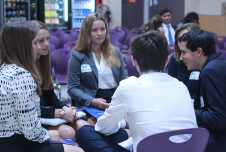
These Kids Are Learning How to Have Bipartisan Conversations

Nine Ways to Help Students Discuss Guns and Violence

How to Inspire Students to Become Better Citizens

Three Strategies for Helping Students Discuss Controversial Issues
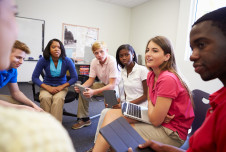
Three SEL Skills You Need to Discuss Race in Classrooms
Join Pilot Waitlist

Home » Blog » General » Teaching Social Problem Solving: Free Worksheets for All Ages

Teaching Social Problem Solving: Free Worksheets for All Ages
Social problem solving skills are essential for individuals of all ages. These skills enable us to navigate social situations, resolve conflicts, and make responsible decisions. Whether you are a parent, teacher, or therapist, teaching social problem solving can greatly benefit the individuals you work with. In this blog post, we will explore the importance of social problem solving skills and provide you with free worksheets that can be used to teach and reinforce these skills.
I. Introduction
A. Importance of social problem solving skills
Social problem solving skills play a crucial role in our everyday lives. They help us build and maintain positive relationships, communicate effectively, and make informed decisions. Individuals who lack these skills may struggle with conflict resolution, have difficulty understanding others’ perspectives, and experience challenges in their personal and professional lives.
B. Overview of the blog post content
In this blog post, we will delve into the concept of social problem solving, discuss effective teaching strategies, and provide you with free worksheets that can be used to enhance social problem solving skills. These worksheets are suitable for individuals of all ages, from preschoolers to adults.
II. Understanding Social Problem Solving
A. Definition of social problem solving
Social problem solving refers to the process of identifying, analyzing, and resolving social conflicts or challenges. It involves a series of steps that enable individuals to think critically, consider alternative solutions, and make decisions that promote positive outcomes.
B. Key components of social problem solving
Social problem solving consists of several key components:
- Identifying the problem or conflict
- Gathering information and perspectives
- Generating alternative solutions
- Evaluating the potential outcomes of each solution
- Selecting and implementing the best solution
- Reflecting on the outcome and adjusting strategies if necessary
C. Benefits of developing social problem solving skills
Developing social problem solving skills can have numerous benefits, including:
- Improved communication and conflict resolution abilities
- Enhanced empathy and understanding of others’ perspectives
- Increased self-confidence and self-esteem
- Greater independence and decision-making skills
- Stronger relationships and social connections
III. Teaching Social Problem Solving
A. Strategies for teaching social problem solving
There are several effective strategies for teaching social problem solving:
- Role-playing and modeling: Engage individuals in role-playing scenarios that simulate real-life social situations. Model appropriate problem-solving strategies and encourage individuals to practice these skills.
- Direct instruction and guided practice: Provide explicit instruction on the steps involved in social problem solving. Break down complex skills into manageable steps and provide guided practice opportunities to reinforce learning.
- Collaborative problem solving: Encourage individuals to work together in groups to solve social problems. Foster collaboration, active listening, and respectful communication.
B. Incorporating social problem solving into everyday activities
Integrating social problem solving into everyday activities can help individuals generalize these skills and apply them in various contexts. Here are some examples:
- Classroom activities: Incorporate social problem solving into group projects, discussions, and conflict resolution exercises. Provide opportunities for students to practice problem-solving skills in a supportive and structured environment.
- Home activities: Encourage family members to engage in problem-solving discussions during mealtime or family meetings. Use real-life scenarios to prompt discussions and brainstorm solutions together.
- Community activities: Engage individuals in community service projects that require problem-solving skills. Encourage them to identify social issues and work collaboratively to develop solutions.
IV. Free Social Problem Solving Worksheets
A. Importance of worksheets in social problem solving
Worksheets are valuable tools for teaching and reinforcing social problem solving skills. They provide individuals with structured practice opportunities, promote critical thinking, and help them internalize problem-solving strategies.
B. Age-appropriate worksheets for different stages
It is important to use age-appropriate worksheets that align with individuals’ developmental stages. Here are some examples:
- Preschool and early elementary: Worksheets for this age group focus on basic social problem solving skills, such as identifying emotions, understanding personal boundaries, and using appropriate language.
- Upper elementary and middle school: Worksheets for this age group introduce more complex problem-solving scenarios, such as resolving conflicts with peers, making responsible decisions, and understanding the consequences of actions.
- High school and beyond: Worksheets for older individuals address topics such as managing peer pressure, navigating romantic relationships, and making ethical choices.
C. Where to find free social problem solving worksheets online
There are several reliable websites and resources where you can find free social problem solving worksheets:
- EverydaySpeech: EverydaySpeech offers a wide range of free social problem solving worksheets for individuals of all ages. Their worksheets are designed by experts in the field and cover various topics related to social problem solving.
- Education.com: Education.com provides free worksheets on social problem solving for different age groups. Their worksheets are categorized by grade level and cover a range of social and emotional skills.
- Teachers Pay Teachers: Teachers Pay Teachers is a platform where educators share and sell educational resources. You can find free social problem solving worksheets created by teachers from around the world.
V. Conclusion
A. Recap of key points discussed
Social problem solving skills are essential for individuals of all ages. They enable us to navigate social situations, resolve conflicts, and make responsible decisions. Teaching social problem solving can be achieved through strategies such as role-playing, direct instruction, and collaborative problem solving. Integrating social problem solving into everyday activities helps individuals generalize these skills.
B. Encouragement to utilize free worksheets for teaching social problem solving
Free social problem solving worksheets are valuable resources that can enhance the teaching and learning of social problem solving skills. They provide individuals with structured practice opportunities and promote critical thinking. Utilizing these worksheets can greatly benefit the individuals you work with.
C. Invitation to explore more resources on the blog
If you found this blog post helpful, I invite you to explore more resources on my blog. You will find a wealth of information and tools to support social emotional learning and the development of essential life skills.
Start your EverydaySpeech Free trial here .
Related Blog Posts:
Pragmatic language: enhancing social skills for meaningful interactions.
Pragmatic Language: Enhancing Social Skills for Meaningful Interactions Pragmatic Language: Enhancing Social Skills for Meaningful Interactions Introduction: Social skills play a crucial role in our daily interactions. They enable us to navigate social situations,...
Preparing for Success: Enhancing Social Communication in Grade 12
Preparing for Success: Enhancing Social Communication in Grade 12 Key Takeaways Strong social communication skills are crucial for academic success and building meaningful relationships in Grade 12. Social communication includes verbal and non-verbal communication,...
Preparing for Success: Enhancing Social Communication in Grade 12 Preparing for Success: Enhancing Social Communication in Grade 12 As students enter Grade 12, they are on the cusp of adulthood and preparing for the next chapter of their lives. While academic success...

FREE MATERIALS
Better doesn’t have to be harder, social skills lessons students actually enjoy.
Be the best educator you can be with no extra prep time needed. Sign up to get access to free samples from the best Social Skills and Social-Emotional educational platform.
Get Started Instantly for Free
Complete guided therapy.
The subscription associated with this email has been cancelled and is no longer active. To reactivate your subscription, please log in.
If you would like to make changes to your account, please log in using the button below and navigate to the settings page. If you’ve forgotten your password, you can reset it using the button below.
Unfortunately it looks like we’re not able to create your subscription at this time. Please contact support to have the issue resolved. We apologize for the inconvenience. Error: Web signup - customer email already exists
Welcome back! The subscription associated with this email was previously cancelled, but don’t fret! We make it easy to reactivate your subscription and pick up right where you left off. Note that subscription reactivations aren't eligible for free trials, but your purchase is protected by a 30 day money back guarantee. Let us know anytime within 30 days if you aren’t satisfied and we'll send you a full refund, no questions asked. Please press ‘Continue’ to enter your payment details and reactivate your subscription
Notice About Our SEL Curriculum
Our SEL Curriculum is currently in a soft product launch stage and is only available by Site License. A Site License is currently defined as a school-building minimum or a minimum cost of $3,000 for the first year of use. Individual SEL Curriculum licenses are not currently available based on the current version of this product.
By clicking continue below, you understand that access to our SEL curriculum is currently limited to the terms above.
- Skip to main content
Teaching SEL
Social Emotional Learning Lessons for Teachers and Counselors
Social Decision Making and Problem Solving
Enhancing social-emotional skills and academic performance.
The approach known as Social Decision Making and Social Problem Solving (SDM/SPS) has been utilized since the late 1970s to promote the development of social-emotional skills in students, which is now also being applied in academic settings. This approach is rooted in the work of John Dewey (1933) and has been extensively studied and implemented by Rutgers University in collaboration with teachers, administrators, and parents in public schools in New Jersey over several decades.
SDM/SPS focuses on developing a set of skills related to social competence, peer acceptance, self-management, social awareness, group participation, and critical thinking.
The curriculum units are structured around systematic skill-building procedures, which include the following components:
- Introducing the skill concept and motivation for learning; presentation of the skill in concrete behavioral components
- Modeling behavioral components and clarifying the concept by descriptions and behavioral examples of not using the skill
- Offering opportunities for practice of the skill in “student-tested,” enjoyable activities, providing corrective feedback and reinforcement until skill mastery is approached
- Labeling the skill with a prompt or cue, to establish a “shared language” that can be used for future situations
- Assigning skill practice outside of structured lessons
- Providing follow-through activities and integrating prompts in academic content areas and everyday interpersonal situations
Connection to Academics
Integrating SDM/SPS into students’ academic work enhances their social-emotional skills while enriching their academic performance. Research consistently supports the benefits of social-emotional learning (SEL) instruction.
Readiness for Decision Making
This aspect of SDM/SPS targets the development of skills necessary for effective social decision making and interpersonal behavior across various contexts. It encompasses self-management and social awareness. A self-management unit focuses on skills such as listening, following directions, remembering, taking turns, and maintaining composure in the classroom. These skills help students regulate their emotions, control impulsivity, and develop social literacy. Students learn to recognize physical cues and situations that may trigger high-arousal, fight-or-flight reactions or dysregulated behavior. Skills taught in this domain should include strategies to regain control and engage clear thinking, such as breathing exercises, mindfulness, or techniques that activate the parasympathetic nervous system.
A social awareness unit emphasizes positive peer relationships and the skills necessary for building healthy connections. Students learn to respond positively to peers who offer praise, compliments, and express positive emotions and appreciation. Skills in this unit also include recognizing when peers need help, understanding when they should seek help from others, and learning how to ask for help themselves. Students should develop the ability to provide and receive constructive criticism and collaborate effectively with diverse peers in group settings.
Decision Making Framework – FIG TESPN
To equip students with a problem-solving framework, SDM/SPS introduces the acronym FIG TESPN. This framework guides students when faced with problems or decisions and aims to help them internalize responsible decision making. The goal is for students to apply this framework academically and personally, even in challenging and stressful situations.
FIG TESPN stands for:
- (F)eelings are my cue to problem solve.
- (I) have a problem.
- (G)oals guide my actions.
- (T)hink of many possible things to do.
- (E)nvision the outcomes of each solution.
- (S)elect your best solution, based on your goal.
- (P)lan, practice, anticipate pitfalls, and pursue your best solution.
- (N)ext time, what will you do – the same thing or something different?
Integration of FIG TESPN into academics
Once students have become familiar with the FIG TESPN framework, there are limitless opportunities for them to apply and practice these skills. Many of the texts students read involve characters who make decisions, face conflicts, deal with intense emotions, and navigate complex interpersonal situations. By applying the readiness skills and FIG TESPN framework to these assignments, students can meet both academic and social-emotional learning (SEL) state standards.
Teachers and staff play a crucial role in modeling readiness skills and the use of FIG TESPN. They can incorporate these skills into their questioning techniques, encouraging individual students and groups to think critically when confronted with problems. This approach helps students internalize the problem-solving framework and develop their decision-making abilities.
By integrating social decision making and problem-solving skills into academic subjects such as social studies, social justice, ethics, and creative writing, students gain a deeper understanding of the FIG TESPN framework. The framework becomes an integral part of their learning experience and supports their growth in both academic and social-emotional domains.
SDM/SPS Applied to Literature Analysis
- Think of an event in the section of the book assigned. When and where did it happen? Put the event into words as a problem.
- Who were the people that were involved in the problem? What were their different feelings and points of view about the problem? Why did they feel as they did? Try to put their goals into words.
- For each person or group of people, what are some different decisions or solutions to the problem that he,she, or they thought of that might help in reaching their goals?
- For each of these ideas or options, what are all of the things that might happen next? Envision and write both short- and long-term consequences.
- What were the final decisions? How were they made? By whom? Why? Do you agree or disagree? Why?
- How was the solution carried out? What was the plan? What obstacles were met? How well was the problem solved? What did you read that supports your point of view?
- Notice what happened and rethink it. What would you have chosen to do? Why?
- What questions do you have, based on what you read? What questions would you like to be able to ask one or more of the characters? The author? Why are these questions important to you?
a simplified version…
- I will write about this character…
- My character’s problem is…
- How did your character get into this problem?
- How does the character feel?
- What does the character want to happen?
- What questions would you like to be able to ask the character you picked, one of the other characters, or the author?
SDM/SPS Applied to Social Studies
- What is the event that you are thinking about? When and where is it happening? Put the event into words as a problem, choice, or decision.
- What people or groups were involved in the problem? What are their different feelings? What are their points of view about the problem?
- What do each of these people or groups want to have happen? Try to put their goals into words.
- For each person or group, name some different options or solutions to the problem that they think might help them reach their goals. Add any ideas that you think might help them that they might not have thought of.
- For each option or solution you listed, picture all the things that might happen next. Envision long- and short-term consequences.
- What do you think the final decision should be? How should it be made? By whom? Why?
- Imagine a plan to help you carry out your solution. What could you do or think of to make your solution work? What obstacles or roadblocks might keep your solution from working? Who might disagree with your ideas? Why? What else could you do?
- Rethink it. Is there another way of looking at the problem that might be better? Are there other groups, goals, or plans that come to mind?
Applying FIG TESPN to Emigration
- What countries were they leaving?
- How did they feel about leaving their countries?
- What problems were going on that made them want to leave?
- What problems would leaving the country bring about?
- What would have been their goals in leaving or staying?
- What were their options and how did they envision the results of each possibility?
- What plans did they have to make? What kinds of things got in their way at the last minute? How did they overcome the roadblocks?
- Once they arrived in a new country, how did they feel? What problems did they encounter at the beginning? What were their first goals?
Adapted from: Fostering Social-Emotional Learning in the Classroom
- Trying to Conceive
- Signs & Symptoms
- Pregnancy Tests
- Fertility Testing
- Fertility Treatment
- Weeks & Trimesters
- Staying Healthy
- Preparing for Baby
- Complications & Concerns
- Pregnancy Loss
- Breastfeeding
- School-Aged Kids
- Raising Kids
- Personal Stories
- Everyday Wellness
- Safety & First Aid
- Immunizations
- Food & Nutrition
- Active Play
- Pregnancy Products
- Nursery & Sleep Products
- Nursing & Feeding Products
- Clothing & Accessories
- Toys & Gifts
- Ovulation Calculator
- Pregnancy Due Date Calculator
- How to Talk About Postpartum Depression
- Editorial Process
- Meet Our Review Board
How to Teach Kids Problem-Solving Skills
KidStock / Blend Images / Getty Images
- Steps to Follow
- Allow Consequences
Whether your child can't find their math homework or has forgotten their lunch, good problem-solving skills are the key to helping them manage their life.
A 2010 study published in Behaviour Research and Therapy found that kids who lack problem-solving skills may be at a higher risk of depression and suicidality. Additionally, the researchers found that teaching a child problem-solving skills can improve mental health .
You can begin teaching basic problem-solving skills during preschool and help your child sharpen their skills into high school and beyond.
Why Problem-Solving Skills Matter
Kids face a variety of problems every day, ranging from academic difficulties to problems on the sports field. Yet few of them have a formula for solving those problems.
Kids who lack problem-solving skills may avoid taking action when faced with a problem.
Rather than put their energy into solving the problem, they may invest their time in avoiding the issue. That's why many kids fall behind in school or struggle to maintain friendships .
Other kids who lack problem-solving skills spring into action without recognizing their choices. A child may hit a peer who cuts in front of them in line because they are not sure what else to do.
Or, they may walk out of class when they are being teased because they can't think of any other ways to make it stop. Those impulsive choices may create even bigger problems in the long run.
The 5 Steps of Problem-Solving
Kids who feel overwhelmed or hopeless often won't attempt to address a problem. But when you give them a clear formula for solving problems, they'll feel more confident in their ability to try. Here are the steps to problem-solving:
- Identify the problem . Just stating the problem out loud can make a big difference for kids who are feeling stuck. Help your child state the problem, such as, "You don't have anyone to play with at recess," or "You aren't sure if you should take the advanced math class."
- Develop at least five possible solutions . Brainstorm possible ways to solve the problem. Emphasize that all the solutions don't necessarily need to be good ideas (at least not at this point). Help your child develop solutions if they are struggling to come up with ideas. Even a silly answer or far-fetched idea is a possible solution. The key is to help them see that with a little creativity, they can find many different potential solutions.
- Identify the pros and cons of each solution . Help your child identify potential positive and negative consequences for each potential solution they identified.
- Pick a solution. Once your child has evaluated the possible positive and negative outcomes, encourage them to pick a solution.
- Test it out . Tell them to try a solution and see what happens. If it doesn't work out, they can always try another solution from the list that they developed in step two.
Practice Solving Problems
When problems arise, don’t rush to solve your child’s problems for them. Instead, help them walk through the problem-solving steps. Offer guidance when they need assistance, but encourage them to solve problems on their own. If they are unable to come up with a solution, step in and help them think of some. But don't automatically tell them what to do.
When you encounter behavioral issues, use a problem-solving approach. Sit down together and say, "You've been having difficulty getting your homework done lately. Let's problem-solve this together." You might still need to offer a consequence for misbehavior, but make it clear that you're invested in looking for a solution so they can do better next time.
Use a problem-solving approach to help your child become more independent.
If they forgot to pack their soccer cleats for practice, ask, "What can we do to make sure this doesn't happen again?" Let them try to develop some solutions on their own.
Kids often develop creative solutions. So they might say, "I'll write a note and stick it on my door so I'll remember to pack them before I leave," or "I'll pack my bag the night before and I'll keep a checklist to remind me what needs to go in my bag."
Provide plenty of praise when your child practices their problem-solving skills.
Allow for Natural Consequences
Natural consequences may also teach problem-solving skills. So when it's appropriate, allow your child to face the natural consequences of their action. Just make sure it's safe to do so.
For example, let your teenager spend all of their money during the first 10 minutes you're at an amusement park if that's what they want. Then, let them go for the rest of the day without any spending money.
This can lead to a discussion about problem-solving to help them make a better choice next time. Consider these natural consequences as a teachable moment to help work together on problem-solving.
Becker-Weidman EG, Jacobs RH, Reinecke MA, Silva SG, March JS. Social problem-solving among adolescents treated for depression . Behav Res Ther . 2010;48(1):11-18. doi:10.1016/j.brat.2009.08.006
Pakarinen E, Kiuru N, Lerkkanen M-K, Poikkeus A-M, Ahonen T, Nurmi J-E. Instructional support predicts childrens task avoidance in kindergarten . Early Child Res Q . 2011;26(3):376-386. doi:10.1016/j.ecresq.2010.11.003
Schell A, Albers L, von Kries R, Hillenbrand C, Hennemann T. Preventing behavioral disorders via supporting social and emotional competence at preschool age . Dtsch Arztebl Int . 2015;112(39):647–654. doi:10.3238/arztebl.2015.0647
Cheng SC, She HC, Huang LY. The impact of problem-solving instruction on middle school students’ physical science learning: Interplays of knowledge, reasoning, and problem solving . EJMSTE . 2018;14(3):731-743.
Vlachou A, Stavroussi P. Promoting social inclusion: A structured intervention for enhancing interpersonal problem‐solving skills in children with mild intellectual disabilities . Support Learn . 2016;31(1):27-45. doi:10.1111/1467-9604.12112
Öğülmüş S, Kargı E. The interpersonal cognitive problem solving approach for preschoolers . Turkish J Educ . 2015;4(17347):19-28. doi:10.19128/turje.181093
American Academy of Pediatrics. What's the best way to discipline my child? .
Kashani-Vahid L, Afrooz G, Shokoohi-Yekta M, Kharrazi K, Ghobari B. Can a creative interpersonal problem solving program improve creative thinking in gifted elementary students? . Think Skills Creat . 2017;24:175-185. doi:10.1016/j.tsc.2017.02.011
Shokoohi-Yekta M, Malayeri SA. Effects of advanced parenting training on children's behavioral problems and family problem solving . Procedia Soc Behav Sci . 2015;205:676-680. doi:10.1016/j.sbspro.2015.09.106
By Amy Morin, LCSW Amy Morin, LCSW, is the Editor-in-Chief of Verywell Mind. She's also a psychotherapist, an international bestselling author of books on mental strength and host of The Verywell Mind Podcast. She delivered one of the most popular TEDx talks of all time.
Why Every Educator Needs to Teach Problem-Solving Skills
Strong problem-solving skills will help students be more resilient and will increase their academic and career success .
Want to learn more about how to measure and teach students’ higher-order skills, including problem solving, critical thinking, and written communication?
Problem-solving skills are essential in school, careers, and life.
Problem-solving skills are important for every student to master. They help individuals navigate everyday life and find solutions to complex issues and challenges. These skills are especially valuable in the workplace, where employees are often required to solve problems and make decisions quickly and effectively.
Problem-solving skills are also needed for students’ personal growth and development because they help individuals overcome obstacles and achieve their goals. By developing strong problem-solving skills, students can improve their overall quality of life and become more successful in their personal and professional endeavors.

Problem-Solving Skills Help Students…
develop resilience.
Problem-solving skills are an integral part of resilience and the ability to persevere through challenges and adversity. To effectively work through and solve a problem, students must be able to think critically and creatively. Critical and creative thinking help students approach a problem objectively, analyze its components, and determine different ways to go about finding a solution.
This process in turn helps students build self-efficacy . When students are able to analyze and solve a problem, this increases their confidence, and they begin to realize the power they have to advocate for themselves and make meaningful change.
When students gain confidence in their ability to work through problems and attain their goals, they also begin to build a growth mindset . According to leading resilience researcher, Carol Dweck, “in a growth mindset, people believe that their most basic abilities can be developed through dedication and hard work—brains and talent are just the starting point. This view creates a love of learning and a resilience that is essential for great accomplishment.”
Set and Achieve Goals
Students who possess strong problem-solving skills are better equipped to set and achieve their goals. By learning how to identify problems, think critically, and develop solutions, students can become more self-sufficient and confident in their ability to achieve their goals. Additionally, problem-solving skills are used in virtually all fields, disciplines, and career paths, which makes them important for everyone. Building strong problem-solving skills will help students enhance their academic and career performance and become more competitive as they begin to seek full-time employment after graduation or pursue additional education and training.
Resolve Conflicts
In addition to increased social and emotional skills like self-efficacy and goal-setting, problem-solving skills teach students how to cooperate with others and work through disagreements and conflicts. Problem-solving promotes “thinking outside the box” and approaching a conflict by searching for different solutions. This is a very different (and more effective!) method than a more stagnant approach that focuses on placing blame or getting stuck on elements of a situation that can’t be changed.
While it’s natural to get frustrated or feel stuck when working through a conflict, students with strong problem-solving skills will be able to work through these obstacles, think more rationally, and address the situation with a more solution-oriented approach. These skills will be valuable for students in school, their careers, and throughout their lives.
Achieve Success
We are all faced with problems every day. Problems arise in our personal lives, in school and in our jobs, and in our interactions with others. Employers especially are looking for candidates with strong problem-solving skills. In today’s job market, most jobs require the ability to analyze and effectively resolve complex issues. Students with strong problem-solving skills will stand out from other applicants and will have a more desirable skill set.
In a recent opinion piece published by The Hechinger Report , Virgel Hammonds, Chief Learning Officer at KnowledgeWorks, stated “Our world presents increasingly complex challenges. Education must adapt so that it nurtures problem solvers and critical thinkers.” Yet, the “traditional K–12 education system leaves little room for students to engage in real-world problem-solving scenarios.” This is the reason that a growing number of K–12 school districts and higher education institutions are transforming their instructional approach to personalized and competency-based learning, which encourage students to make decisions, problem solve and think critically as they take ownership of and direct their educational journey.
Problem-Solving Skills Can Be Measured and Taught
Research shows that problem-solving skills can be measured and taught. One effective method is through performance-based assessments which require students to demonstrate or apply their knowledge and higher-order skills to create a response or product or do a task.
What Are Performance-Based Assessments?

With the No Child Left Behind Act (2002), the use of standardized testing became the primary way to measure student learning in the U.S. The legislative requirements of this act shifted the emphasis to standardized testing, and this led to a decline in nontraditional testing methods .
But many educators, policy makers, and parents have concerns with standardized tests. Some of the top issues include that they don’t provide feedback on how students can perform better, they don’t value creativity, they are not representative of diverse populations, and they can be disadvantageous to lower-income students.
While standardized tests are still the norm, U.S. Secretary of Education Miguel Cardona is encouraging states and districts to move away from traditional multiple choice and short response tests and instead use performance-based assessment, competency-based assessments, and other more authentic methods of measuring students abilities and skills rather than rote learning.
Performance-based assessments measure whether students can apply the skills and knowledge learned from a unit of study. Typically, a performance task challenges students to use their higher-order skills to complete a project or process. Tasks can range from an essay to a complex proposal or design.
Preview a Performance-Based Assessment
Want a closer look at how performance-based assessments work? Preview CAE’s K–12 and Higher Education assessments and see how CAE’s tools help students develop critical thinking, problem-solving, and written communication skills.
Performance-Based Assessments Help Students Build and Practice Problem-Solving Skills
In addition to effectively measuring students’ higher-order skills, including their problem-solving skills, performance-based assessments can help students practice and build these skills. Through the assessment process, students are given opportunities to practically apply their knowledge in real-world situations. By demonstrating their understanding of a topic, students are required to put what they’ve learned into practice through activities such as presentations, experiments, and simulations.
This type of problem-solving assessment tool requires students to analyze information and choose how to approach the presented problems. This process enhances their critical thinking skills and creativity, as well as their problem-solving skills. Unlike traditional assessments based on memorization or reciting facts, performance-based assessments focus on the students’ decisions and solutions, and through these tasks students learn to bridge the gap between theory and practice.
Performance-based assessments like CAE’s College and Career Readiness Assessment (CRA+) and Collegiate Learning Assessment (CLA+) provide students with in-depth reports that show them which higher-order skills they are strongest in and which they should continue to develop. This feedback helps students and their teachers plan instruction and supports to deepen their learning and improve their mastery of critical skills.

Explore CAE’s Problem-Solving Assessments
CAE offers performance-based assessments that measure student proficiency in higher-order skills including problem solving, critical thinking, and written communication.
- College and Career Readiness Assessment (CCRA+) for secondary education and
- Collegiate Learning Assessment (CLA+) for higher education.
Our solution also includes instructional materials, practice models, and professional development.
We can help you create a program to build students’ problem-solving skills that includes:
- Measuring students’ problem-solving skills through a performance-based assessment
- Using the problem-solving assessment data to inform instruction and tailor interventions
- Teaching students problem-solving skills and providing practice opportunities in real-life scenarios
- Supporting educators with quality professional development
Get started with our problem-solving assessment tools to measure and build students’ problem-solving skills today! These skills will be invaluable to students now and in the future.

Ready to Get Started?
Learn more about cae’s suite of products and let’s get started measuring and teaching students important higher-order skills like problem solving..
ECE RESOURCE HUB
Early Childhood Education - Virginia
Early Childhood Education - Resource Hub
Virginia Kindergarten Readiness Program
Advancing Effective Interactions & Instruction
Social Problem Solving
Social problem solving - preschoolers, with our support, children can work together to find solutions to their problems.
Conflicts between peers are typical in most preschool classrooms. At this age, children are still learning to understand how their actions affect others, so it is hard for them to come up with fair solutions to their conflicts. It’s our role to practice and teach problem-solving skills and then support children as they navigate handling problems.
The problem-solving steps outlined in these modules are based on resources from the National Center for Pyramid Model Innovations (NCPMI).
Hallmarks of This Strategy
Be proactive.
Find ways to prevent common conflicts. Can you expand popular centers or add more of an often-fought over toy? How can you minimize the time children are waiting?
Practice Problem Solving
Teach children social problem-solving skills in advance through books, puppets, games, or discussions. These can give them the tools they need to find solutions in the moment.
Give Children an Active Say
When challenging moments come up, support the problem-solving process by giving children an active say in how they might solve a problem.
Teaching Social Problem Solving in Advance
In this lesson, we cover tips for explicitly teaching problem-solving skills in engaging and meaningful ways.
Supporting Social Problem Solving in the Moment
In this lesson, we explore ways to support problem-solving skills in the moment when children encounter challenging social situations.
IMPLEMENT THIS STRATEGY
Additional Resources
Guide to promoting problem solving, guide to promoting problem solving (español).
Learn more about this strategy and its importance, and learn tips for trying it in your classroom.
Family Guide to Supporting Problem Solving with Others
Family guide to supporting problem solving with others (español).
Share this guide with families to communicate the strategies you're using at school. Take time to make connections between how children are supported at home and in the classroom.

A Problem-Solving Toolkit
These downloadable resources are a great way to help your students become super problem solvers.
- Problem Solving Story
- Problem Solving Story (multiple languages)
- Problem Solving Steps
- Problem Solving Steps (multiple languages )
- Solution Kit
- Solution Kit (multiple languages)

Consider Context and Culture
Problem solving can look different across classrooms, situations, and cultures. Explore culturally appropriate ways to resolve conflicts between children.
- Read this Article
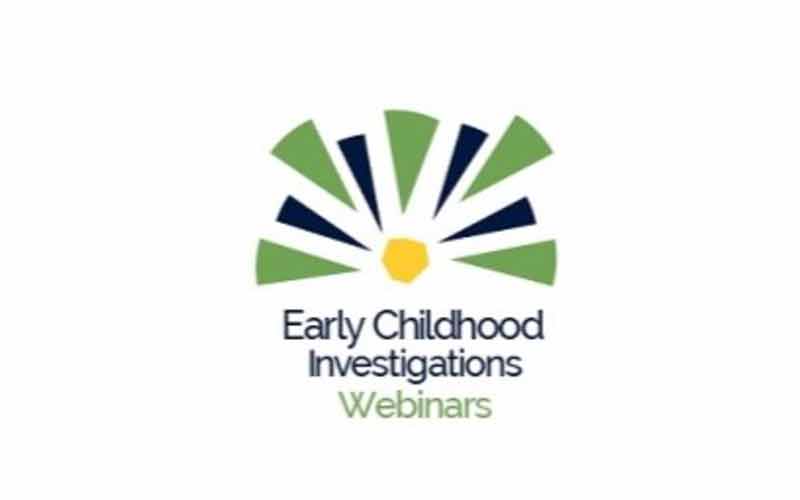
EARLY CHILDHOOD INVESTIGATIONS
A Teachable Moment
Nadia Jaboneta shares her experience using a peer conflict as an opportunity to promote equity and social justice.
- Watch the Webinar
The Solution Kit is created by and made available from the National Center for Pyramid Model Innovations (NCPMI). You can find this resource on their website at ChallengingBehavior.org.
ECE Resource Hub
The Center for Advanced Study of Teaching and Learning (CASTL)
- Map & Directions
- Core Skills
- Strategy Library
- Book Collections
- JOBS AT UVA-CASTL

Copyright © 2023 by the Rector and Visitors of the University of Virginia
Teaching Problem-Solving Skills
Many instructors design opportunities for students to solve “problems”. But are their students solving true problems or merely participating in practice exercises? The former stresses critical thinking and decision making skills whereas the latter requires only the application of previously learned procedures.
Problem solving is often broadly defined as "the ability to understand the environment, identify complex problems, review related information to develop, evaluate strategies and implement solutions to build the desired outcome" (Fissore, C. et al, 2021). True problem solving is the process of applying a method – not known in advance – to a problem that is subject to a specific set of conditions and that the problem solver has not seen before, in order to obtain a satisfactory solution.
Below you will find some basic principles for teaching problem solving and one model to implement in your classroom teaching.
Principles for teaching problem solving
- Model a useful problem-solving method . Problem solving can be difficult and sometimes tedious. Show students how to be patient and persistent, and how to follow a structured method, such as Woods’ model described below. Articulate your method as you use it so students see the connections.
- Teach within a specific context . Teach problem-solving skills in the context in which they will be used by students (e.g., mole fraction calculations in a chemistry course). Use real-life problems in explanations, examples, and exams. Do not teach problem solving as an independent, abstract skill.
- Help students understand the problem . In order to solve problems, students need to define the end goal. This step is crucial to successful learning of problem-solving skills. If you succeed at helping students answer the questions “what?” and “why?”, finding the answer to “how?” will be easier.
- Take enough time . When planning a lecture/tutorial, budget enough time for: understanding the problem and defining the goal (both individually and as a class); dealing with questions from you and your students; making, finding, and fixing mistakes; and solving entire problems in a single session.
- Ask questions and make suggestions . Ask students to predict “what would happen if …” or explain why something happened. This will help them to develop analytical and deductive thinking skills. Also, ask questions and make suggestions about strategies to encourage students to reflect on the problem-solving strategies that they use.
- Link errors to misconceptions . Use errors as evidence of misconceptions, not carelessness or random guessing. Make an effort to isolate the misconception and correct it, then teach students to do this by themselves. We can all learn from mistakes.
Woods’ problem-solving model
Define the problem.
- The system . Have students identify the system under study (e.g., a metal bridge subject to certain forces) by interpreting the information provided in the problem statement. Drawing a diagram is a great way to do this.
- Known(s) and concepts . List what is known about the problem, and identify the knowledge needed to understand (and eventually) solve it.
- Unknown(s) . Once you have a list of knowns, identifying the unknown(s) becomes simpler. One unknown is generally the answer to the problem, but there may be other unknowns. Be sure that students understand what they are expected to find.
- Units and symbols . One key aspect in problem solving is teaching students how to select, interpret, and use units and symbols. Emphasize the use of units whenever applicable. Develop a habit of using appropriate units and symbols yourself at all times.
- Constraints . All problems have some stated or implied constraints. Teach students to look for the words "only", "must", "neglect", or "assume" to help identify the constraints.
- Criteria for success . Help students consider, from the beginning, what a logical type of answer would be. What characteristics will it possess? For example, a quantitative problem will require an answer in some form of numerical units (e.g., $/kg product, square cm, etc.) while an optimization problem requires an answer in the form of either a numerical maximum or minimum.
Think about it
- “Let it simmer”. Use this stage to ponder the problem. Ideally, students will develop a mental image of the problem at hand during this stage.
- Identify specific pieces of knowledge . Students need to determine by themselves the required background knowledge from illustrations, examples and problems covered in the course.
- Collect information . Encourage students to collect pertinent information such as conversion factors, constants, and tables needed to solve the problem.
Plan a solution
- Consider possible strategies . Often, the type of solution will be determined by the type of problem. Some common problem-solving strategies are: compute; simplify; use an equation; make a model, diagram, table, or chart; or work backwards.
- Choose the best strategy . Help students to choose the best strategy by reminding them again what they are required to find or calculate.
Carry out the plan
- Be patient . Most problems are not solved quickly or on the first attempt. In other cases, executing the solution may be the easiest step.
- Be persistent . If a plan does not work immediately, do not let students get discouraged. Encourage them to try a different strategy and keep trying.
Encourage students to reflect. Once a solution has been reached, students should ask themselves the following questions:
- Does the answer make sense?
- Does it fit with the criteria established in step 1?
- Did I answer the question(s)?
- What did I learn by doing this?
- Could I have done the problem another way?
If you would like support applying these tips to your own teaching, CTE staff members are here to help. View the CTE Support page to find the most relevant staff member to contact.
- Fissore, C., Marchisio, M., Roman, F., & Sacchet, M. (2021). Development of problem solving skills with Maple in higher education. In: Corless, R.M., Gerhard, J., Kotsireas, I.S. (eds) Maple in Mathematics Education and Research. MC 2020. Communications in Computer and Information Science, vol 1414. Springer, Cham. https://doi.org/10.1007/978-3-030-81698-8_15
- Foshay, R., & Kirkley, J. (1998). Principles for Teaching Problem Solving. TRO Learning Inc., Edina MN. (PDF) Principles for Teaching Problem Solving (researchgate.net)
- Hayes, J.R. (1989). The Complete Problem Solver. 2nd Edition. Hillsdale, NJ: Lawrence Erlbaum Associates.
- Woods, D.R., Wright, J.D., Hoffman, T.W., Swartman, R.K., Doig, I.D. (1975). Teaching Problem solving Skills.
- Engineering Education. Vol 1, No. 1. p. 238. Washington, DC: The American Society for Engineering Education.
Catalog search
Teaching tip categories.
- Assessment and feedback
- Blended Learning and Educational Technologies
- Career Development
- Course Design
- Course Implementation
- Inclusive Teaching and Learning
- Learning activities
- Support for Student Learning
- Support for TAs
- Learning activities ,

- Conferences
- Livestreams
There’s a Lot to Love About The Zones of Regulation
PREORDER! Getting Into The Zones of Regulation: The Complete Framework and Digital Curriculum Companion
2024 Upcoming Events
Coming together face to face to learn with and from each other is what feeds our knowledge, improves our practice, and sustains our passion for supporting social learners from age four throughout mature adulthood.
17th Annual Global Providers' Online Conference | June 21-22
Self-Regulation and Stress Management: Empowering Kids and Adults with Practical Tools and Strategies
2-Day Conference
Boston Area, MA | Oct 10 - 11
1-Day Seminars
Albuquerque, NM | Sept 20
Portland, OR | Oct 18
Santa Barbara, CA | Nov 15
Browse All Events
New Article & Downloadable

Is It Worth the Risk? Exploring the Value of the Social Risk Scale
Take a minute to read the new article and download the Social Risk Scale , a visual tool for empowering individuals (or yourself) to gauge the risk related to one’s social goals. Tip: Usually what we want to do is far less risky than we think!
Streaming This Week!

Self-Regulation and Stress Management
Join renowned experts for 2 days of learning this Friday and Saturday at the 17th Annual Global Providers Conference ! Day 1 features Dr. Tracey Marks and Michelle Garcia Winner, who will be discussing stress, anxiety, and executive functioning. Day 2 highlights Leah Kuypers and Dr. Pamela Crooke, who will share exciting insights about two award-winning series: The Zones of Regulation and Superflex .
Valuing Neurodiversity
Respecting neurodiversity is important. navigating the complex social world to meet one's self-determined goals is also important. they aren’t mutually exclusive we provide social emotional teaching strategies, not to “fix” or “cure” individuals with learning differences, but instead offer a methodical, concrete way of understanding how the social world works., social, emotional & academic learning resources across all ages.
The Social Thinking Methodology has been a guiding resource for schools, clinics, individuals, and families around the world for more than 25 years. Our work supports individuals' social, emotional & academic learning, whether neurotypical or Neurodivergent, with or without diagnosis. Our materials are helpful for students with solid to strong expressive and receptive language skills in mainstream and special education. They can be used across developmental ages to support the development of social competencies, flexible thinking & social problem solving to improve: conversation & social connection , executive functioning , friendship & relationship development, perspective taking , self-regulation , and Social Thinking Vocabulary . Help us protect the fidelity of this body of work and be informed about how you can/can’t use our materials considering our intellectual property, copyrights and trademarks .
Products for All Ages
- Visual Supports
Online Training
Free Webinars
Article Library
Digital Products

Teachers, speech-language pathologists, clinicians, behavior specialists, and parents are using our expansive collection of curricula, books, games, and posters to teach social competencies to social learners ages 4 and up.
While our deeper work is for individuals with social learning differences and/or challenges (ADHD, twice exceptional, social communication differences, autism spectrum levels 1 and 2, and other social, emotional, and cognitive learning differences (with diagnoses or without), our work is also being adopted into mainstream classrooms and workplaces around the world to improve social, emotional, and academic learning for all.
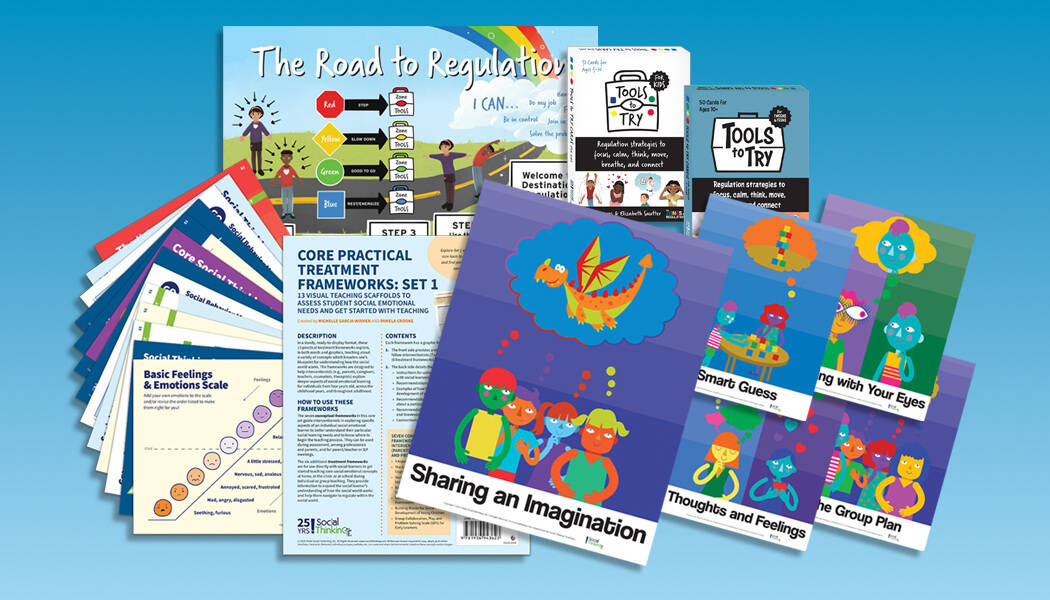
Posters, Games & Visual Supports
Our visual supports provide a fun, engaging way for your students to learn about their own thoughts, feelings, and reactions and of those around them. With powerful visual supports students can more easily connect with social concepts and apply them to their own lives. As an added bonus, our visual supports are versatile and can be used in a variety of settings from the classroom or clinic to your home.
Spark student engagement & raise social awareness—there’s something for everyone.

Utilizing more than 25 years of clinical practice and the latest research, these one-of-a-kind online training courses explore a large range of aspects required for developing social competencies, including self-regulation, executive functioning, social problem-solving, and much more. These courses have been watched and raved about over 50,000 times from all around the world!
This is your opportunity for deeper learning and to earn CE Credit (for select professionals).
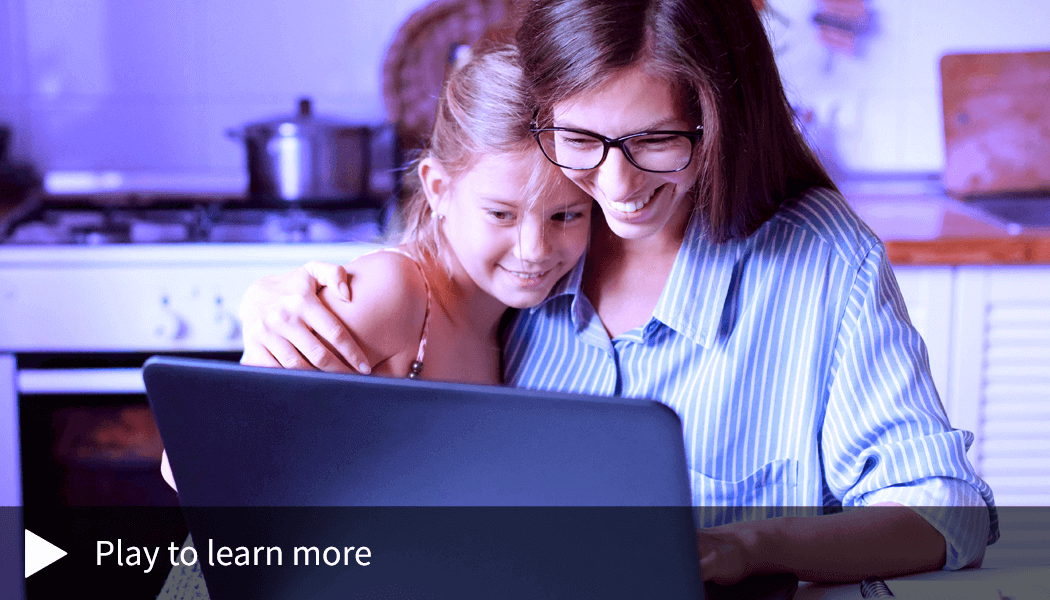
Explore how to teach a variety of core Social Thinking concepts—for free. Browse our entire webinar collection and discover strategies to help people of all ages develop social competencies, self-regulation, social skills, social-emotional understanding, flexible thinking, and more!
Our webinars are not pre-approved for credit by continuing education organizations. However, all participants can download and print a Certificate of Completion.
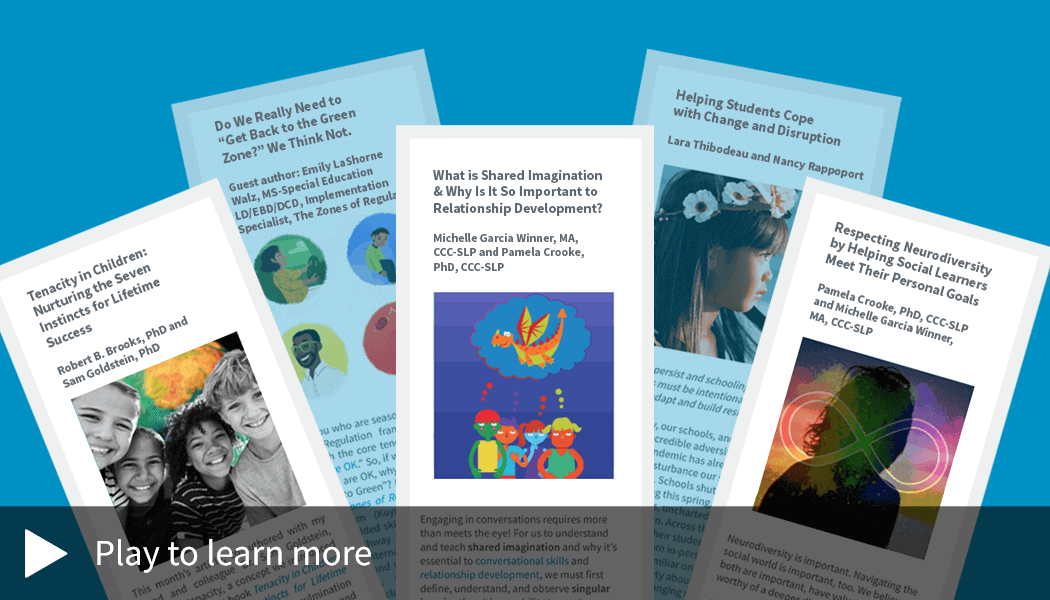
Social Thinking is proud to provide an extensive collection of free articles devoted to helping individuals build stronger social awareness and social functioning using the Social Thinking Methodology.
Browse our library of 100+ free articles and learn strategies you can start using right away. We’re constantly adding material based on the latest research and our evolving client work—so visit our library often and stay informed!
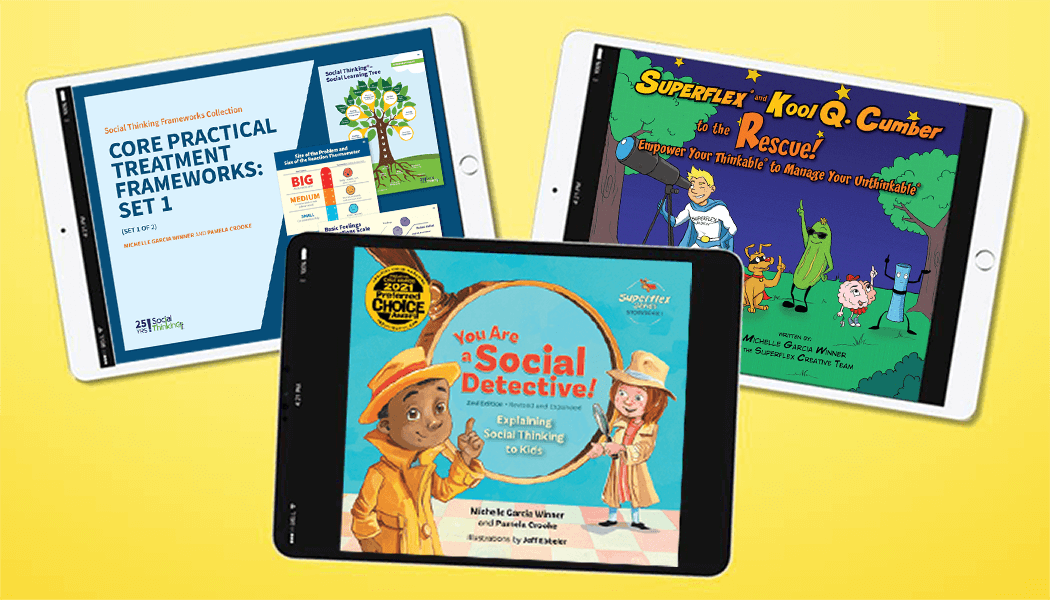
Our newest and most popular digital products make it easy for children to explore social emotional learning.
Build social awareness and vocabulary with our award-winning You Are A Social Detective, Social Thinking and Me & Superflex curriculum.
Teach strategies to help students better problem solve & self-regulate with our all new Social Thinking Frameworks collection.
Best-Selling Series
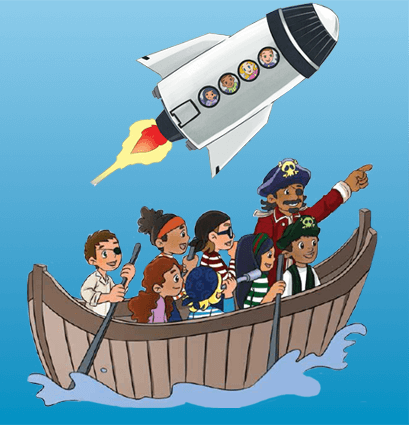
We Thinkers! Series

Superflex Series

Zones of Regulation
Browse by age.

Early Learners (Ages 4-7)
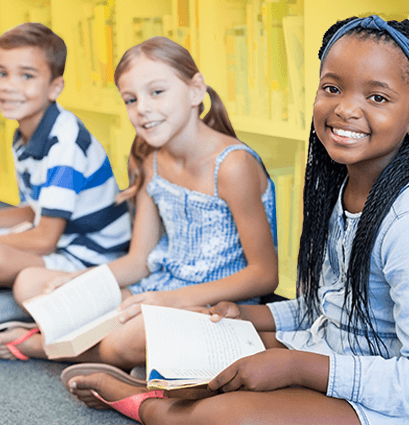
Elementary School (Ages 8-11)
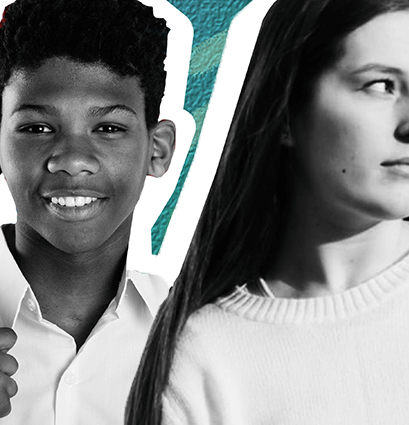
Tweens & Teens

Young & Mature Adults
Practical strategies taught by thought leaders.
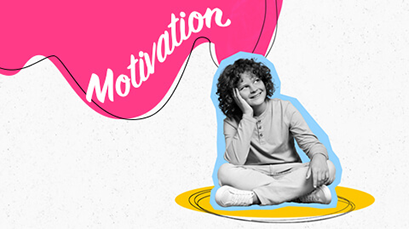
Practical Strategies to Help Individuals Rally Their Motivation
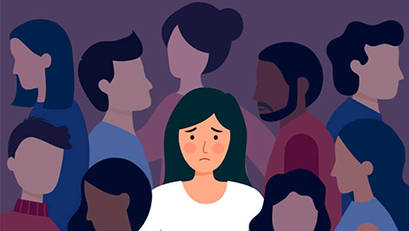
Combating Loneliness and Misbehavior


What’s Alexithymia? and How Does It Affect Emotional Regulation and Awareness?
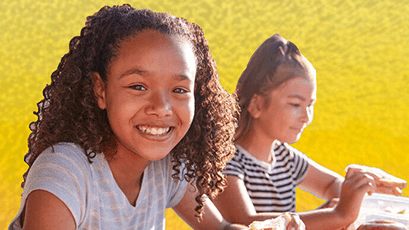
5 Critical Life Skills

Small Talk & Conversations
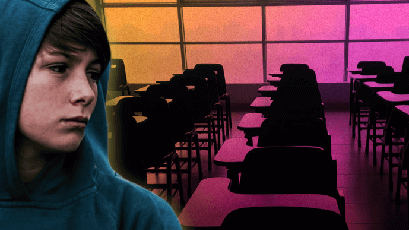
What’s It Mean to “Behave”?

What’s a Friend, and Do I Really Need Friends?

Resilience in an Uncertain Time: Supporting Students and Families Now and Later

Defining 7 Aspects of Tenacity & Exploring Strategies for Social Problem Solving

Raising an Organized Child: Strategies to Promote Executive Functions
Our newest webinars.

Superflex 2nd Edition Kit Launch Party
May 9, 2024 | 9:00 AM Pacific
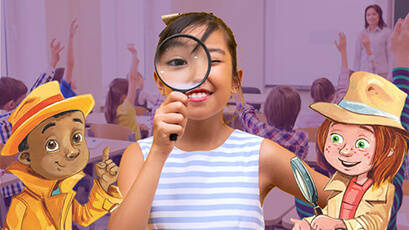
Social Detective Thinking to Start the School Year
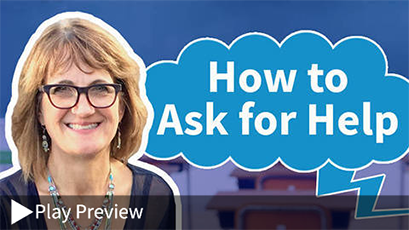
How to Ask for Help
Why It’s Hard & How We Can Help

Perspective Taking in the Classroom

Face-to-face communication is a thing again! Wait, how do we teach that?
How Social Emotional Learning Can Ease the Transition Back to School
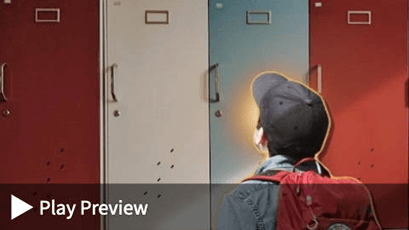
Exploring Our Children’s Stress
Tips & Tools for Adapting Teaching to Students’ Needs

Demystifying Executive Functions
What They Are and How to Teach Them
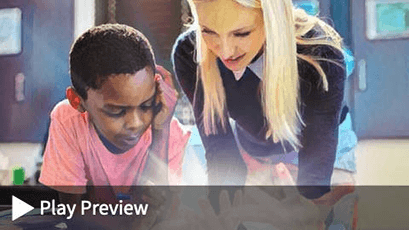
Understanding Self-Regulation
Help Your Students Learn to Help Themselves
Must-Read Articles

Is It Worth the Risk?
Exploring the Value of the Social Risk Scale
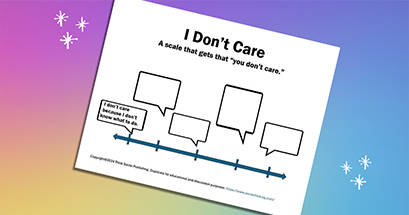
Just Because Someone Says, “I Don’t Care,”
Doesn’t Necessarily Mean They Don't!
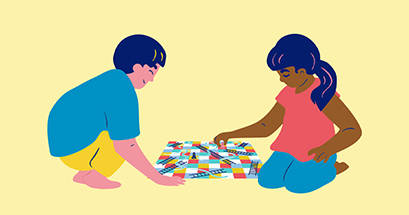
The 3 Parts of Play: Teaching Planning and Executive Functions
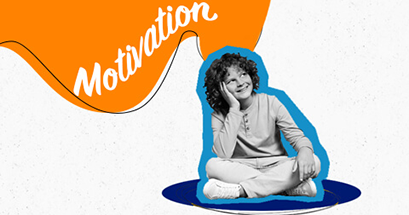
How Can We Rally Our Motivation?
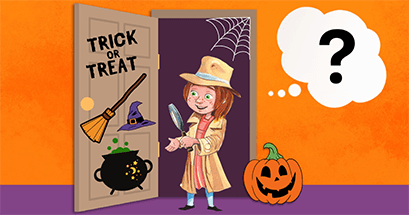
One more BOO-tiful way to Teach Social Concepts using a Halloween Theme

Initiating Connection Is an Antidote to Loneliness
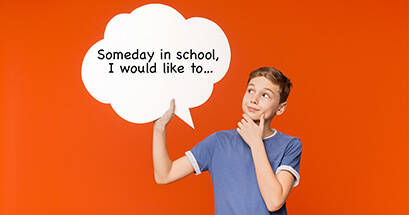
Empowering Student Voices: The Transformative Impact of Student-Led Social Learning & Advocacy
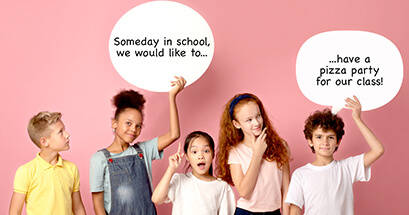
How to Foster Students’ Flexible Thinking & Advocacy Skills Using Future Thinking: The Somedays Activity
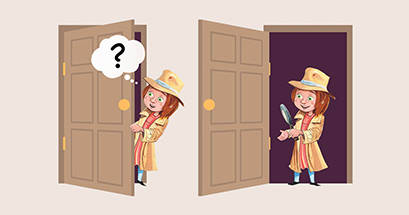
DO ObseRve (DOOR): A Practical Social Observation Strategy for Managing Social Transitions

The ABCs of Summer Boredom: Awareness, Curiosity, and Action
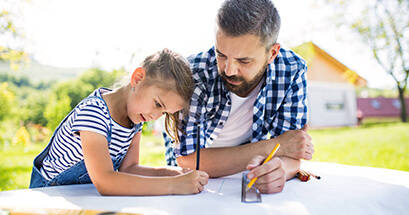
Two Simple Executive Function Strategies to Avoid Family Stress & Stay Connected During Summer Break
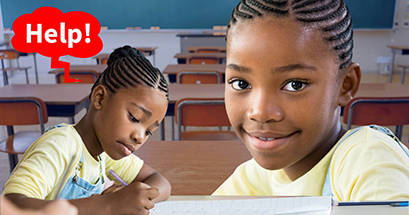
Teaching an Essential Life Skill: How to Ask for Help
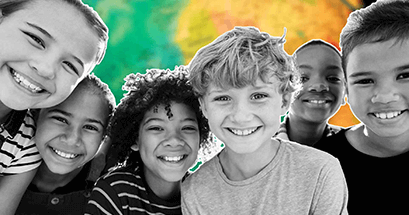
Tenacity in Children: Nurturing the Seven Instincts for Lifetime Success

Respecting Neurodiversity by Helping Social Learners Meet Their Personal Goals
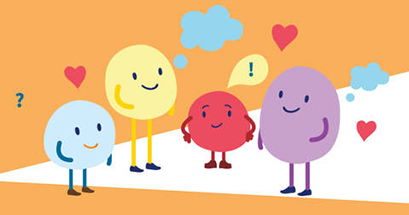
Social Perspective Taking & The 5 Steps of Being with Others

10 Truths & Tips for Making and Keeping Friends

Three Ways to Advocate for Students Who Appear Persistently “Checked Out”
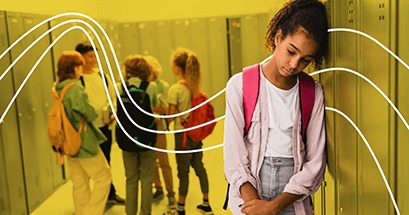
Break Through Students’ Social Anxiety Barrier: A Strategy for Student-Teacher Communication

Social Thinking® in the World of Online Learning with More Literal-Minded Social Learners

Social Metacognition: Using Social Emotional Learning to Engage Hope

14 Tips to Help All Kids Learn to Manage Anxiety
Digital curricula, storybooks & visual supports.
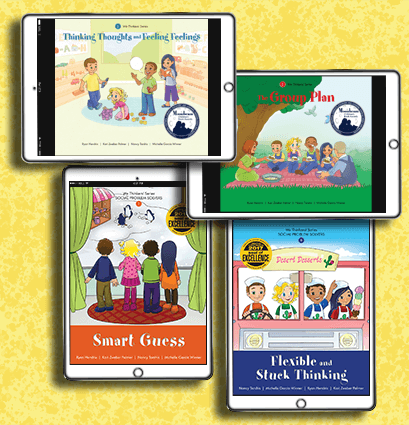
We Thinkers! Storybooks
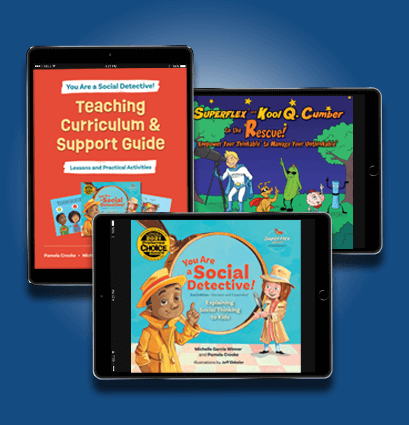
Social Detective & Superflex
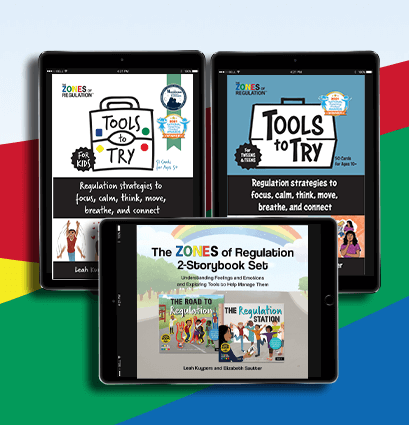
To use at home & school
Our free stuff portal is filled to the brim with teaching ideas, downloadable thinksheets & video lessons to foster the development of social competencies across all ages.
What is social thinking.
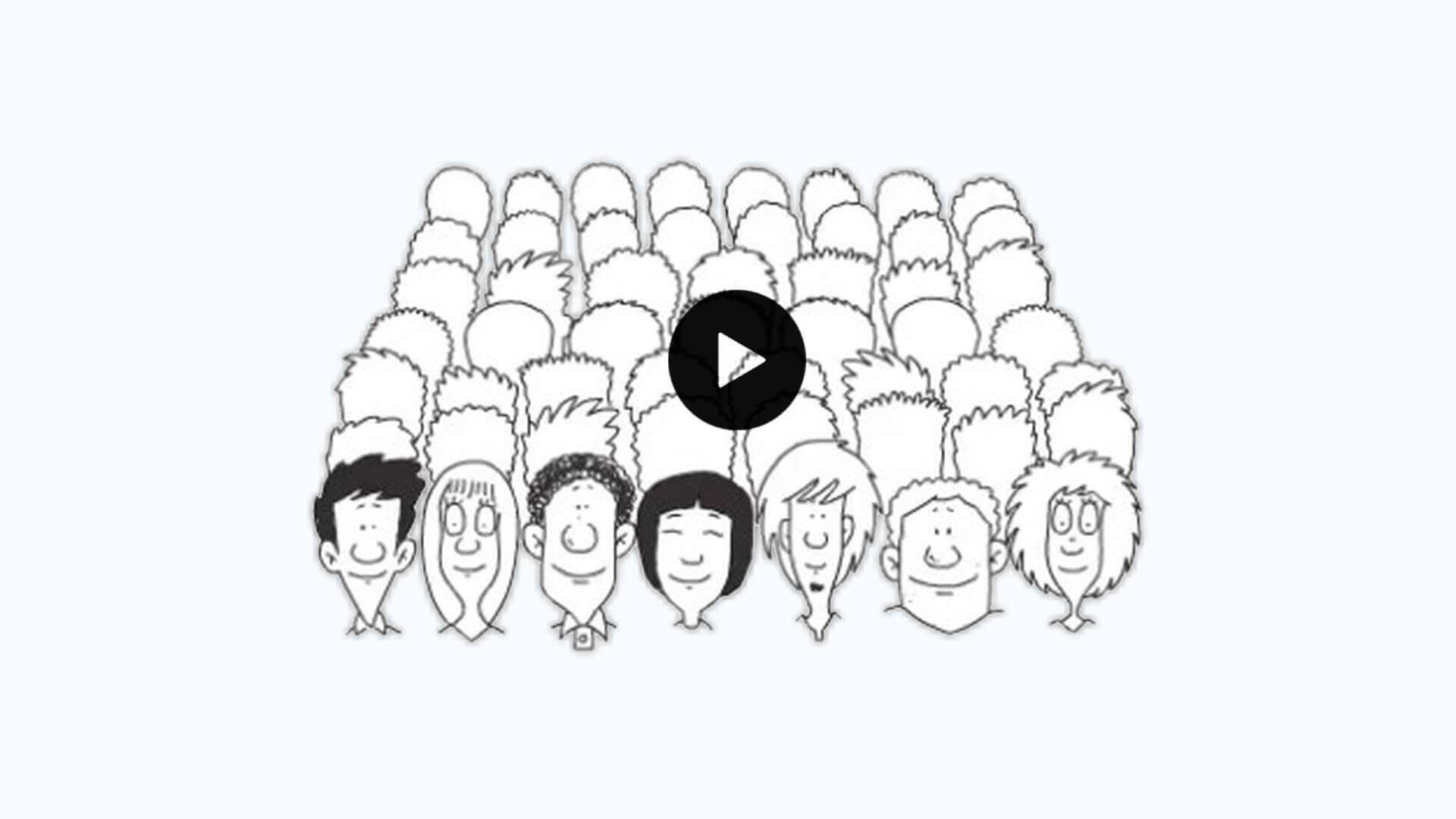
There are 3 distinct yet overlapping definitions:
What do we mean when we say, "social thinking?" We have a lot of information to share. Here are three ways to understand how we use the words "social thinking:"
- The Business
- The Methodology
Watch the video or browse below to learn more!
Important Intellectual Property Information
Our teachings help engage people in social and emotional learning, not only about themselves but about others. help us protect the fidelity of this body of work and be informed about how you can/can’t use our materials., helping you help others.
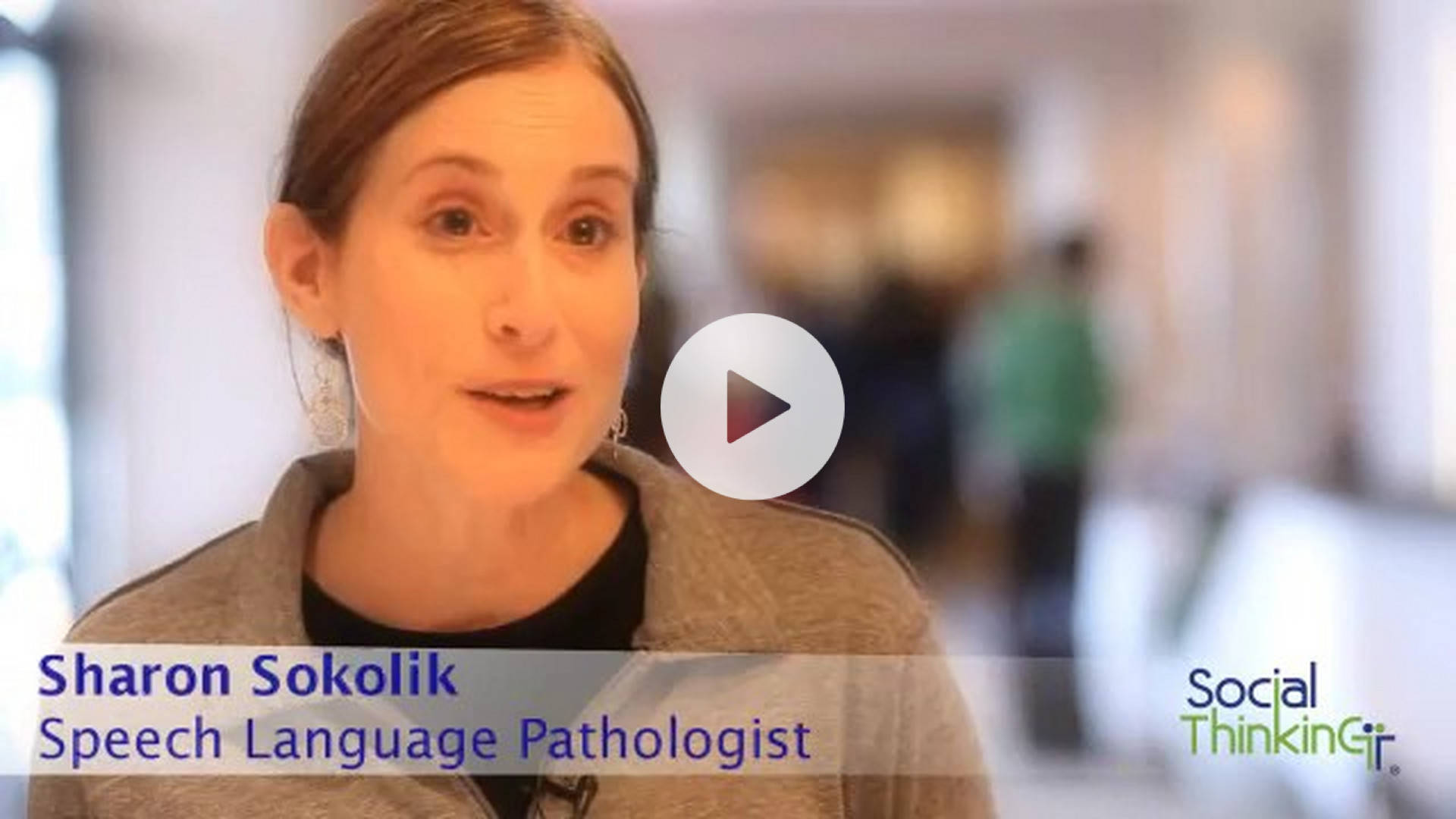
Over time, our teachings can help people cultivate relationships and improve performance at school and at work. For 25 years our experts have been a guiding resource for schools, clinics, and families around the world, and we’re here for you, too. Whether you're teaching individuals with ADHD, autism spectrum (levels 1 or 2), social communication disorders, or an entire mainstream class-our strategies can help you help them.
This has been a game changer for helping general education teachers. We have been using the Social Thinking Methodology with our students, they are making friends, are more successful academically, and generally happier in all they do. Thank you! - Jennifer, Special Education Teacher
What People Are Saying About Social Thinking
Parents & Families
Elementary School
Mental Health & Clinicians
Speech Language Pathologists
Adult Clients
Embracing Equity in SEL
Learn what social thinking is doing to play a greater role in eliminating systemic and unconscious biases in race, gender, and neurodiversity within the materials we produce., social thinking speakers: global training experts.
The Social Thinking Training and Speakers' Collaborative (STTSC) consists of 13 clinicians, including Michelle Garcia Winner and Dr. Pamela Crooke , who train around the world on the Social Thinking Methodology in addition to working closely with schools, clients, and families. All of our speakers have an active caseload and provide training to help schools embed Social Thinking’s teachings across all aspects of the educational day in public and private schools. We also work with universities as well as businesses to help adults continue to develop stronger social communication skills. Please note that the members of our STTSC are the only people licensed and approved to give training on the Social Thinking Methodology.
The speaker did an excellent job at keeping our attention and broke the information down in a way that was easy to understand and gave us a process to help ensure we could implement what we learned. - Special Ed. Teacher, School Training

Personalized Training for Your School or Clinic
Our methodology.
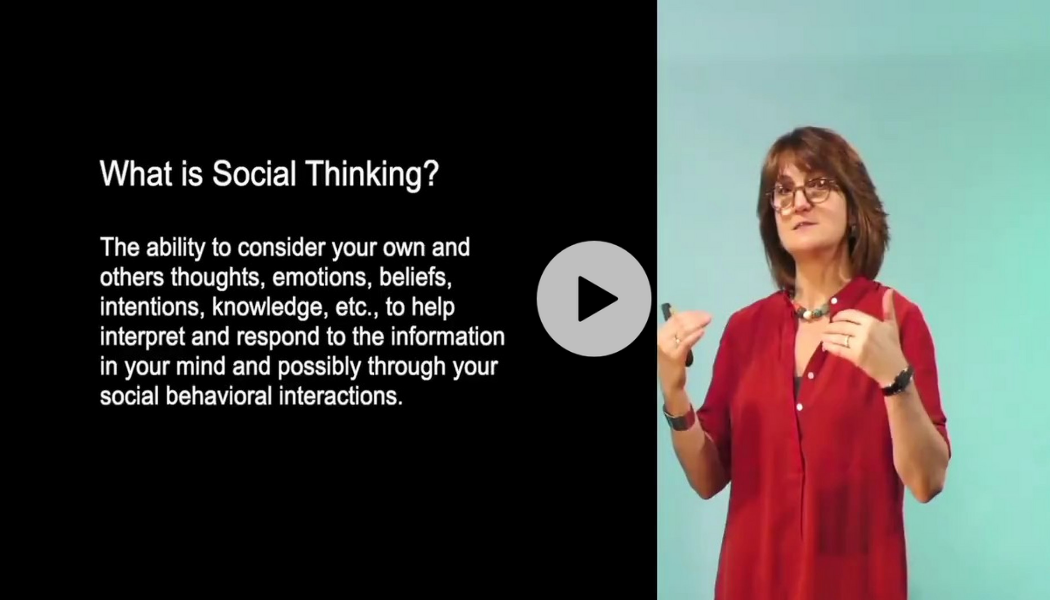
Strategies to Build Social Competencies
The Social Thinking Methodology provides evidence-based strategies to help people ages four through adult develop their social competencies, flexible thinking & social problem solving to meet their own social goals and improve:
- Conversation & social connection
- Executive functioning
- Friendship & relationship development
- Perspective taking
- Self-regulation
- Social Thinking Vocabulary
Your Shopping Cart
Your Savings
Order Subtotal
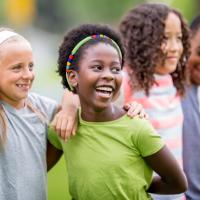
Teaching Social Skills to Kids Who Don’t Yet Have Them
Teachers: Do your students have trouble getting along with others — and getting along with you? Do you tell them to stop doing it — but they keep on doing it? Learn to understand and teach your students with social skills problems. Learn why they have these problems and how to teach them better behavior. Read about Social Skills training and the steps to follow in implementing it.
Do any of these comments sound familiar?
"I tell him to stop doing that, but he keeps on doing it. Darn. This kid must have been raised by wolves!"
"That kid knows how she is supposed to behave. She CHOOSES to misbehave."
"I ask him what he is supposed to be doing and he can tell me. He knows better, so why isn't he doing it?"
Yep. Some kids know "intellectually" what to do, but they've never "physically" done it before. It's difficult for all of us to all-of-the-sudden display a completely different behavior than we've been showing for years. Changing a habit is no easy task. To get an idea of what it's like, try this activity:
Do now activity (Yes! Right now.)
Cross your arms on your chest. Notice how one arm goes over the other with it’s hand tucked under it’s biceps (upper arm). At the same time, the hand of the lower arm has it’s hand resting on top of the biceps of the other limb. OK, now unfold your arms and switch their positions so that the one that was on the bottom is now on the top (and vice versa). All right. It took you awhile, but you were able to do it. Feel a bit uncomfortable and odd? Now, uncross the arms and fold them again in the new way. Again. And again. In fact, for the rest of your life, do it this new way. Don’t ever make a mistake or revert to the old way.
Think that’ll be difficult? Yep. Now imagine what we are asking our socially unskilled kids to do. We’re expecting them to immediately change a behavior that is indelibly etched into their brains, feels “comfortable,” and has been “assigned” to them by others who have labeled them as the type of person who “does that thing.” Kids who display the wrong behaviors as they interact with others will have a long and arduous path to travel as they work to change to “a better way.” Thank goodness they have a patient and supportive teacher like you. You’ll support them as they struggle to show the new behavior. You’ll focus on progress rather than perfection, seeing evidence of the new rather than vestiges of the old.
Why don’t our kids have social skills?
Social skills are those communication, problem-solving, decision making, self-management, and peer relations abilities that allow one to initiate and maintain positive social relationships with others. Deficits or excesses in social behavior interfere with learning, teaching, and the classroom’s orchestration and climate. Social competence is linked to peer acceptance, teacher acceptance, inclusion success, and post school success.
Many of our youngsters never learned “appropriate behavior” for social settings-situations in which they must interact/cope with others. Perhaps they did not receive this guidance in the home, either because of lack of training by elders or another system of values & behaviors being taught. Perhaps they did have good role models in the home and neighborhood who promoted “appropriate” behavior, but didn’t pick it up as well as most kids, just like some kids learn to read without formal instruction previous to school, and some need the structured process of reading instruction.
Displaying poor social skills is likely to get one rejected by others (other kids don’t like them and won’t associate with them). Others of our kids work hard to show the new and better behaviors they’ve been told to show, but are still rejected by others, perhaps due to past reputation or maybe because others don’t like the awkward and unsure demonstration of the newly learned behaviors which don’t appear “natural.” At other times, our pupils may still fail because they have difficulty monitoring and controlling their behavior when unexpected reactions occur. They misread social cues given off by others. For example:
- Not noticing the rejection actions by others that non-verbally/verbally say, “Get lost.”
- Viewing the positive social forays of others as being threatening. If rejected because of their behavior (past or present), they’ll rarely-if ever-get the chance to display the “correct” behaviors under naturalistic circumstances and fail to incorporate them into their behavioral repertoire.
Others of our kids will not respond positively to social skills instruction because they don’t see the skills as being necessary or useful. For example:
- assisting the teacher
- avoiding conflict with adults
- disagreeing in a non-confrontational manner
The behaviors they display now seem just fine to them. They obtain the attention, objects or power they seek.
A note to teachers of students with Emotional & Behavioral Disorders (EBD)
If you are a teacher of students with behavior disorders, are you teaching social skills to your students? Are you doing so in structured daily lessons? If not, why not? The defining characteristic of kids with EBD is their inability to build and sustain positive relationships. Kids with EBD are 3 times more likely than general ed kids to be rejected because of their behavior. It’s time to use more than point systems to “manage” the behavior of these pupils. We need more than “the curriculum of control.” We must teach the skills we wish to see.
What exactly is social skills training?
If our kids don’t have ‘em, we’ve got to teach ‘em. “Social skills training” is a general term for instruction conducted in (behavioral) areas that promotes more productive/positive interaction with others. We teach social skills to students who are, at present, socially unskilled in order to promote acceptance by teachers, other adults and peers. A social skills training program might include (among other things):
- approaching others in social acceptable ways
- asking for permission rather than acting
- making and keeping friends
- sharing toys/materials
- work habits/academic survival skills
- attending to task
- following directions
- seeking attention properly
- accepting the consequences of one’s behavior
- counting to 10 before reacting
- distracting oneself to a pleasurable task
- learning an internal dialog to cool oneself down and reflect upon the best course of action
- using words instead of physical contact
- seeking the assistance of the teacher or conflict resolution team
Examples of Social Skills for Pre-Schoolers
- Skills that will help in later instruction (example: listening skills)
- Skills that enhance success in school/daycare settings (example: asking a question)
- How to make and keep friends (examples: asking for something, asking others to play)
- awareness of own and other’s feelings (called “Theory of Mind” - being able to predict how others might feel in a situation and understanding that others might not feel as you do)
- coping with negative feelings
- Positive, non-aggressive choices when faced with conflict
- what to do when you make mistakes
- handling teasing and taunting
Social skills terms/definitions
Socially skilled: the ability to respond to a given environment in a manner that produces, maintains, and enhances positive interpersonal (between people) effects. Social competence: one’s overall social functioning; a composite or multitude of generalized social skills. Social competence can be improved by teaching social behaviors/social skills.
Steps to follow in teaching social skills
Essentially, we teach social skills like we teach academics. Assess the level of the students, prepare the materials, introduce the material, model it, have them practice it, and provide feedback. If you purchase a social skills curriculum, it will probably include an assessment device, lessons, and activities. Teaching is a matter of following the directions in the kit. If you’re on your own in developing a curriculum and devising lessons, here are the specifics:
Pre-teaching
- Select the students who need training in certain skills, via assessment.
- Identify powerful re-enforcers that will motivate the students to attend to lessons and attempt new behaviors. (examples: group and/or individual points, raffle tickets, progressively moving a paper dog along the wall toward a food bowl which earns a reward.)
- Identify and specifically define the target behaviors to be taught. Decide which behaviors are needed. Define them precisely so that everyone agrees on what is to be accomplished, or what the student will be able to do/show after instruction.
- Task analyze the target behavior(s), if this listing of sequenced actions is not done for you by a packaged program.
Teaching social skills
- Create groups of 2-5 youngsters with similar skill deficits. Small groups give students a chance to observe others, practice with peers, and receive feedback.
- Remove obstacles to learning (examples: close class door, remove corrections officers.)
- Meet early in the day so that kids are attentive and have the whole day to practice what they learn in your lesson.
- Introduce the program, it’s content, and why and how it will benefit them (examples: it will help them to return to general education classes, help them obtain and keep a job, result in less trouble with teachers/parents, impress their boyfriend’s/girlfriend’s parents when they meet them, be able to convince the police to let them go if stopped).
- Set up the rules and regulations. Identify the behaviors you’ll reward during lessons-one person speaks at a time, pay attention, be positive-all of which may need to be taught in the initial lessons.
- Teach the easy-to-learn skills first to ensure student (and teacher) success and reinforcement. Use the traditional teaching model of telling and showing them.
- learn what to do when you make mistakes
- role play at least two different scenarios, displaying right and wrong behaviors
- from oneself
- from the teachers
- Practice, practice, practice through homework assignments, review sessions, assignments to real life settings, and surprise “tests.” For example, your student has been learning to handle interactions with authority figures. Send the student on an errand and have an unknown teacher confront him/her, accusing the pupil of “forging” a hall pass. See if the student performs poorly, runs, is rude, etc. The teacher can then say, “This is a test. How did you do?”
- Teach to the high status kids in your group first. Have them demonstrate the new behaviors and be rewarded. Have your lower status kids demonstrate the behaviors after the leaders do so. Make sure the lessons are interesting and fun so that kids look forward to the lessons. Start the teaching of “following directions” by having them cook, make candy or do magic tricks. Then move to more school-based examples.
- practicing in different settings and under various conditions
- prompting and coaching the student in naturally occurring situations
- having the student submit self-report forms for each class period
- meeting with the student to discuss performance throughout school or life
- Monitor the behavior outside of the lessons. Keep track of the display of the behavior for IEP documentation, motivation of the student, etc. Have the student self-monitor/self-assess in order to build internal motivation/control.
- Recognize and reward its display in everyday school situations. When you see a good situation for a student to display a “new” behavior, prompt its use with cues and hints as subtle as possible, but as strong as necessary.
Example: Pedro is going to be congratulated by the principal for being the “most improved student,” with regard to behavior. As the principal approaches, the teacher whispers into Pedro’s ear, “Remember to wipe the booger off your finger before shaking hands with Mr. Yoon.” Wording for more socially advanced student “What do we do with boogers before we shake hands?” The student must decide on correct course of action.
Social skills training helps individuals make better choices in situations.
- saying please and thank you
- dealing better with anger and frustration
- asking questions appropriately
- accepting the consequences administered by the teacher
- accepting responsibility for one’s own behavior
- dealing with losing/frustration/making a mistake/insults in an appropriate manner (without yelling or physical aggression)
- initiating a conversation with others
- accepting “No” for an answer
- joining a group activity already in progress
- making friends
- complimenting others
- understanding the feelings of others (and accepting them as valid or OK)
- compromising on issues
- cooperating with peers
- coping with taunts and verbal/physical threats/aggression from others
- seeking attention in an appropriate manner
- waiting one’s turn
- asking permission
- avoiding fighting with others
- interrupting others appropriately
- showing sportsmanship
- respecting the opinions of others
- accepting praise from others
- apologizing for wrong doing
- familiar/family/friends
- same gender
- different gender
We want to strive for the lofty goal of all of our students interacting positively with others — particularly us! In order to promote more socially skilled and appropriate actions among our pupils, we must move beyond simply telling them to stop what they are doing wrong. While we might tell them which behaviors to avoid, we then need to teach them what they should be doing in those situations.
Sometimes, the process involves pre-teaching, in which we work to prepare a pupil for the change process through a discussion of the drawbacks of displaying the present inappropriate behavior (e.g., rejection by peers, penalties from school administration), and the benefits of adopting a particular replacement for it.
Humans show specific behaviors because there is a benefit to doing so. In order to fully convince the student to change his or her ways, the benefits of the new actions must outweigh those of continuing the old patterns of behavior. The new ways must also be viewed by schoolmates as being acceptable. Often, packaged social skills programs promote social actions that, while esteemed by adults, would never be shown by any socially accepted kids in the mainstream. In that case, becoming skilled in the new behavior does little to promote acceptance and positive interactions.
As with the teaching of academics, begin with the prerequisite skills and then move on to the more advanced ones. Your curriculum will be comprised of the skills that are most important to classroom decorum and your students’ social needs.
While the teaching of social skills consumes time during the school day, over the weeks and months we gain back lost academic instructional time as our students display more acceptable behavior. Our school life becomes easier and more rewarding. The same applies to the school-based and outside lives of our students.
Related resource from our partner:

Treatment Options for Social Skills Issues (opens in a new window)
External related content
- 7 Principles for Serving Students With Disabilities and Intersectional Identities Through Social-Em…
- When social-emotional learning leaves out students with disabilities
Liked it? Share it!
McIntyre, T. (6/23/06) Teaching Social Skills to Kids Who Don’t Have Them. Dr. Mac’s Amazing Behavior Management Advice Site. ( www.behavioradvisor.com )
Visit our sister websites:
Reading rockets launching young readers (opens in a new window), start with a book read. explore. learn (opens in a new window), colorín colorado helping ells succeed (opens in a new window), adlit all about adolescent literacy (opens in a new window), reading universe all about teaching reading and writing (opens in a new window).
We have immediate therapy openings for clients who have Health First Medicaid.
303.935.5307
Diversity, Inclusivity and Equity Declaration:
We are gender inclusive. We embrace neurodiversity. We are committed to being anti-racist.

Teaching Children Social Problem-Solving Skills
We are often asked about the best strategies for helping young minds navigate the complexities of social interactions. One essential skill is social problem-solving skills. These skills empower kids to handle social challenges, build relationships, and grow into empathetic, confident individuals.
Social problem-solving skills are like a compass that guides children through the intricate landscape of human interactions. Here's why these skills are invaluable:
Conflict Resolution: These skills help children resolve conflicts peacefully and productively, preventing misunderstandings from escalating into major issues.
Empathy: Social problem-solving nurtures empathy, allowing children to better understand the feelings and perspectives of others. This forms the basis of healthy relationships.
Critical Thinking: Problem-solving encourages critical thinking and decision-making, equipping children with tools to make informed choices.
Communication: Effective problem-solving relies on clear and respectful communication, enhancing a child's ability to express themselves and comprehend others.
Teaching Social Problem-Solving Skills
Model and Explain: Children learn by example. Model effective problem-solving skills in your own interactions, and explain your thought process. For instance, if you encounter a disagreement with a colleague, share how you addressed the issue in a respectful and constructive manner.
Use Real-Life Scenarios: Utilize real-life situations to teach problem-solving. When your child faces a problem, ask open-ended questions to encourage them to think about solutions.
Use Pretend Scenarios: When reading a book, or watching a TV show or a movie, discuss how the characters worked through problems and how social problems could have been handled differently. Ask what your child might have done differently in the situation.
Role-Playing: Role-playing scenarios can be a fun way to practice problem-solving. Take on various roles and have your child navigate through different social situations.
Teach Emotional Regulation : Help children identify and manage their emotions. Emotions are often at the heart of social challenges, so teaching kids how to control and express their feelings constructively is essential.
Support Their Independence: While guidance is crucial, allow your child to take the lead in resolving their social issues whenever possible. This promotes self-reliance and problem-solving confidence.
Positive Reinforcement: Praise your child when they successfully apply problem-solving skills. Positive reinforcement encourages the repetition of these constructive behaviors.
Teaching children social problem-solving skills is an investment in their future. These skills not only empower them to navigate the intricate web of social interactions but also contribute to their emotional intelligence and self-esteem. The skills provide a transformative power in shaping confident, empathetic, and resilient individuals. By actively fostering these skills, we are helping children become adept at facing life's challenges with grace and compassion.
Related Posts
Teaching children the art of self-advocacy, the art of conversation: early development of reciprocal communication.
Evidence-Based Interventions to Teach Social Skills
- First Online: 11 June 2023
Cite this chapter

- Shannon M. Arthur 3 ,
- Ashley N. Creem 3 ,
- Shanna Bahry 3 ,
- Jessica Cauchi 3 &
- Justin B. Leaf 3 , 4
Part of the book series: Autism and Child Psychopathology Series ((ACPS))
1850 Accesses
Social skills are complex and therefore are often difficult to research and treat. This may lead to the use of non-evidenced-based practices to address social skill deficits. However, a variety of evidence-based social skills interventions have been developed in the field of Applied Behavior Analysis (ABA). These interventions focus on building social skills, ranging from eye contact to maintaining a conversation. This chapter provides an overview of the social skills interventions and its applications to different populations and contexts. It will also highlight studies that provide evidence supporting the use of the interventions for a variety of skills. Considerations regarding implementation of these interventions and future research directions will also be discussed.
This is a preview of subscription content, log in via an institution to check access.
Access this chapter
- Available as PDF
- Read on any device
- Instant download
- Own it forever
- Available as EPUB and PDF
- Compact, lightweight edition
- Free shipping worldwide - see info
- Durable hardcover edition
- Dispatched in 3 to 5 business days
Tax calculation will be finalised at checkout
Purchases are for personal use only
Institutional subscriptions
Akers, J. S., Pyle, N., Higbee, T. S., Pyle, D., & Gerencser, K. R. (2016). A synthesis of script fading effects with individuals with autism spectrum disorder: A 20-year review. Review Journal of Autism and Developmental Disorders, 3 (1), 1–17.
Google Scholar
Aldred, C. R., Greend, J., & Adams, C. (2004). A new social communication intervention for children with autism: Pilot randomized controlled treatment student suggesting effectiveness. Journal of Child Psychology and Psychiatry, 45 , 1–11.
Aman, M. G., & Singh, N. N. (1986). Aberrant behavior checklist manual . Slosson Publications.
American Psychiatric Association. (2013). Diagnostic and statistical manual of mental disorders (DSM-5®) . American Psychiatric Pub.
Angelico, A. P., Crippa, J. A. S., & Loureiro, S. R. (2013). Social anxiety disorder and social skills: A critical review of the literature. International Journal of Behavioral Consultation and Therapy, 7 (4), 16–23.
Ashburner, J., Saggers, B., Campbell, M. A., Dillon-Wallace, J. A., Hwang, Y.-S., Carrington, S., & Bobir, N. (2019). How are students on the autism spectrum affected by bullying? Perspectives of students and parents. Journal of Research in Special Educational Needs, 19 (1), 27–44.
Au, A., Mountjoy, T., Leaf, J. B., Leaf, R., Taubman, M., McEachin, J., & Tsuji, K. (2016). Teaching social behaviour to individuals diagnosed with autism spectrum disorder using the cool versus not cool procedure in a small group instructional format. Journal of Intellectual and Developmental Disability, 41 (2), 115–124.
Ayres, K. M., Travers, J., Shepley, S. B., & Cagliani, R. (2017). Video-based instruction for learners with autism. In J. B. Leaf (Ed.), Handbook of social skills and Autism spectrum disorder: Assessment, curricula, and intervention . Springer.
Baer, D. M., Wolf, M. M., & Risley, T. R. (1968). Some current dimensions of applied behavior analysis. Journal of Applied Behavior Analysis, 1 (1), 91.
PubMed PubMed Central Google Scholar
Baer, D. M., Wolf, M. M., & Risley, T. R. (1987). Some still-current dimensions of applied behavior analysis. Journal of Applied Behavior Analysis, 20 (4), 313–327.
Baker-Ericzén, M. J., Brookman-Frazee, L., & Stahmer, A. (2005). Stress levels and adaptability in parents of toddlers with and without autism spectrum disorders. Research and Practice for Persons with Severe Disabilities, 30 (4), 194–204.
Banda, D. R., Dogoe, M. S., & Matuszny, R. M. (2011). Review of video prompting studies with persons with developmental disabilities. Education and Training in Autism and Developmental Disabilities , 514–527.
Bauminger, N., & Kasari, C. (2000). Loneliness and friendship in high-functioning children with autism. Child Development, 71 (2), 447–456.
PubMed Google Scholar
Bearss, K., Burrell, T. L., Stewart, L., & Scahill, L. (2015). Parent training in autism spectrum disorder: What’s in a name? Clinical Child and Family Psychology Review, 53 , 113–120.
Bellstedt, E., Gillberg, C., & Gillberg, C. (2005). Autism after adolescence: Population-based 13- to 22-year follow-up study of 120 individuals with autism diagnosed in childhood. Journal of Autism and Developmental Disorders, 35 , 351–360.
Brian, J. A., Smith, I. M., Zwaigenbaum, L., Roberts, W., & Bryson, S. E. (2015). The social ABCs caregiver-mediated interventions for toddlers with autism spectrum disorder: Feasibility, acceptability, and evidence of promise from a multisite study. Autism Research, 9 , 899–912.
Brown, J. L., Krantz, P. J., McClannahan, L. E., & Poulson, C. L. (2008). Using script fading to promote natural environment stimulus control of verbal interactions among youths with autism. Research in Autism Spectrum Disorders, 2 , 480–497. https://doi.org/10.1016/j.rasd.2007.08.006
Article Google Scholar
Buschbacher, P., Fox, L., & Clarke, S. (2004). Recapturing desired family routines: A parent-professional behavioral collaboration. Research and Practice for Persons with Severe Disabilities, 29 (1), 25–39.
Cappadocia, M. C., & Weiss, J. A. (2011). Review of social skills training groups for youth with Asperger’s syndrome and high functioning autism. Research in Autism Spectrum Disorders, 5 , 70–78.
Carter, A. S., Davis, N. O., Klin, A., & Volkmar, F. R. (2005). Social development in autism. In F. R. Volkmar, R. Paul, A. Klin, & D. Cohen (Eds.), Handbook of autism and pervasive 98 developmental disorders: Vol. 1. Diagnosis, development, neurobiology, and behavior . Wiley.
Casagrande, K. A., & Ingersoll, B. R. (2017). Parent-mediated interventions for social communication in young children with ASD. In J. B. Leaf (Ed.), Handbook of social skills and autism spectrum disorder: Assessment, curricula, and intervention (pp. 257–283). Springer.
Chang, Y., & Locke, J. (2016). A systematic review of peer-mediated interventions for children with autism spectrum disorder. Research in Autism Spectrum Disorders, 27 , 1–10.
Charlop, M. H., & Milstein, J. P. (1989). Teaching autistic children conversational speech using video modeling. Journal of Applied Behavior Analysis, 22 , 275–285.
Charman, T. (2003). Why is joint attention a pivotal skill in autism? In U. Frith & E. Hill (Eds.), Autism: Mind and brain (pp. 67–87). Oxford University Press.
Cihak, D. F., Smith, C. C., Cornett, A., & Coleman, M. B. (2012). The use of video modeling with the picture exchange communication system to increase independent communicative initiations in preschoolers with autism and developmental delays. Focus on Autism and Other Developmental Disabilities, 27 , 3–11.
Cihon, J. H., Ferguson, J. L., Lee, M., Leaf, J. B., Leaf, R., & McEachin, J. (2021). Evaluating the cool versus not cool procedure via telehealth. Behavior Analysis in Practice , 1–9.
Constantino, J. N., & Gruber, C. P. (2012). Social responsiveness scale: SRS-2 . Western Psychological Services.
Coolican, J., Smith, I. M., & Bryson, S. (2010). Brief parent training in pivotal response treatment for preschoolers with autism. Journal of Child Psychology and Psychiatry, 51 (12), 1321–1330.
Cowan, R. J., & Allen, K. D. (2007). Using naturalistic procedures to enhance learning in individuals with autism: A focus on generalized teaching within the school setting. Psychology in the Schools, 44 , 701–715. https://doi.org/10.1002/pits.20259
Cowen, E. L., Pederson, A., Babigian, H., Izzo, L. D., & Trost, M. A. (1973). Long-term follow-up of early detected vulnerable children. Journal of Consulting and Clinical Psychology, 41 (3), 438–446.
Davis, N. O., & Carter, A. S. (2008). Parenting stress in mothers and fathers of toddlers with autism spectrum disorders: Associations with child characteristics. Journal of Autism and Developmental Disorders, 38 (7), 1278–1291.
de Boo, G. M., & Prins, P. J. M. (2007). Social incompetence in children with ADHD: Possible moderators and mediators in social-skills training. Clinical Psychology Review, 27 (1), 78–97. https://doi.org/10.1016/j.cpr.2006.03.006
Article PubMed Google Scholar
Deming, D. J. (2017). The growing importance of social skills in the labor market. The Quarterly Journal of Economics, 132 (4), 1593–1640.
DiGennaro Reed, F. D., Novak, M. D., Henley, A. J., Brand, D., & McDonald, M. (2017). Evidence-based interventions. In J. B. Leaf (Ed.), Handbook of social skills and autism spectrum disorder: Assessment, curricula, and intervention . Springer.
Ellingsen, R., Bolton, C., & Laugeson, E. (2017). Evidence-based social skills groups for individuals with autism spectrum disorder across the lifespan. In J. B. Leaf (Ed.), Handbook of social skills and autism spectrum disorder: Assessment curricula, and intervention (pp. 343–358). Springer.
Fisher, M. H., Lense, M. D., & Dykens, E. M. (2016). Longitudinal trajectories of intellectual and adaptive functioning in adolescents and adults with Williams syndrome. Journal of Intellectual Disability Research, 60 (10), 920–932.
Frankel, F., & Myatt, R. (2003). Children’s friendship training . Brunner-Routledge.
Frankel, F., Myatt, R., Sugar, C., Whitham, C., Gorospe, C. M., & Laugeson, E. (2010). A randomized controlled study of parent-assisted children’s friendship training with children having autism spectrum disorders. Journal of Autism and Developmental Disorders, 40 (7), 827–842.
Gantman, A., Kapp, S. K., Orenski, K., & Laugeson, E. A. (2012). Social skills training for young adults with high-functioning autism spectrum disorders: A randomized controlled pilot study. Journal of Autism and Developmental Disorders, 42 (6), 1094–1103.
Ganz, J. B., & Flores, M. M. (2008). Effects of the use of visual strategies in play groups for children with autism spectrum disorders and their peers. Journal of Autism and Developmental Disorders, 38 (5), 926–940.
Garcia-Albea, E., Reeve, S. A., Brothers, K. J., & Reeve, K. F. (2014). Using audio script fading and multiple-exemplar training to increase vocal interactions in children with autism. Journal of Applied Behavior Analysis, 47 , 325–343. https://doi.org/10.1002/jaba.125
Garfinkle, A., & Schwartz, I. (2002). Peer imitation: Increasing social interactions in children with autism and other developmental disabilities in inclusive preschool classrooms. Topics in Early Childhood Special Education, 22 (1), 26–38.
Garwood, J. D., & Van Loan, C. L. (2019). Using social stories with students with social, emotional, and behavioral disabilities: The promise and the perils. Exceptionality, 27 (2), 133–148.
Gerhardt, P. F., & Crimmins, D. (2013). Social skills and adaptive behavior in learners with autism spectrum disorders . Brookes Publishing Company.
Gillooly, A. E., Riby, D. M., Durkin, K., & Rhodes, S. M. (2020). Peer relationships in children with Williams syndrome: Parent and teacher insights. Journal of Autism and Developmental Disorders , 1–10.
Gresham, F. M. (1986). Conceptual issues in the assessment of social competence in children. In P. Strain, M. Garulnick, & H. Walker (Eds.), Children’s social behavior: Development, assessment, and modification (pp. 143–173). Academic.
Gresham, F. M., & Elliot, S. N. (2008). Social skills improvement system rating scales manual . NCS Pearson.
Groskreutz, M. P., Peters, A., Groskreutz, N. C., & Higbee, T. S. (2015). Increasing play-based commenting in children with autism spectrum disorder using a novel script-frame procedure. Journal of Applied Behavior Analysis, 48 , 442–447. https://doi.org/10.1002/jaba.194
Haring, T. G., Kennedy, C. H., Adams, M. J., & Pitts-Conway, V. (1987). Teaching generalization of purchasing skills across community settings to autistic youth using videotape modeling. Journal of Applied Behavior Analysis, 20 , 89–96.
Harper, C. B., Symon, J. B. G., & Frea, W. D. (2008). Recess is time-in: Using peers to improve social skills of children with autism. Journal of Autism and Developmental Disorders, 38 (5), 815–826.
Harris, S. L., Handleman, J. S., & Alessandri, M. (1990). Teaching youths with autism to offer assistance. Journal of Applied Behavior Analysis, 23 (3), 297–305.
Herring, S., Gray, K., Taffe, J., Tonge, B., Sweeney, D., & Einfield, S. (2006). Behaviour and emotional problems in toddlers with pervasive developmental disorders and developmental delay: Associations with parental mental health and family functioning. Journal of Intellectual Disability Research, 50 (12), 874–882.
Hoppes, K., & Harris, S. L. (1990). Perceptions of child attachment and maternal gratification in mothers of children with autism and Down syndrome. Journal of Clinical Child Psychology, 19 (4), 365–370.
Horner, R. H., Carr, E. G., Halle, J., McGee, G., Odom, S., & Wolery, M. (2005). The use of single-subject research to identify evidence-based practice in special education. Exceptional Children, 71 , 165–179.
Howlin, P. (2000). Outcome in adult life for more able individuals with autism or Asperger syndrome. Autism, 4 , 63–83.
Howlin, P., Goode, S., Hutton, J., & Rutter, M. (2004). Adult outcome for children with autism. Journal of Child Psychology and Psychiatry, 45 (2), 212–229.
Ingersoll, B., & Wainer, A. L. (2013). Initial efficacy of project ImPACT: A parent-mediated social communication intervention for young children with ASD. Journal of Autism and Developmental Disorders, 43 (12), 2943–2952.
Jones, E. A., & Feeley, K. M. (2009). Parent implemented joint attention intervention for preschoolers with autism. The Journal of Speech and Language Pathology and Applied Behavior Analysis, 4 (1), 74–89.
Jones, E. A., Carr, E. G., & Feeley, K. M. (2006). Multiple effects of joint attention intervention for children with autism. Behavior Modification, 30 (6), 782–834.
Kamps, D. M., Kravits, T., Lopez, A. G., Potucek, J., & Harrell, L. G. (1998). What do the peers think? Social validity of integrated programs. Education and Treatment of Children, 21 , 107–134.
Kamps, D. M., Mason, R., Thiemann-Bourque, K., Feldmiller, S., Turcotte, A., & Miller, T. (2014). The use of peer networks to increase communicative acts of first grade students with autism spectrum disorders. Focus on Autism and Other Developmental Disabilities, 29 ( 4 ), 230–245.
Kamps, D. M., Mason, R., & Heitzman-Powell, L. (2017). Peer mediation interventions to improve social and communication skills for children and youth with autism spectrum disorder. In J. B. Leaf (Ed.), Handbook of social skills and autism spectrum disorder: Assessment, curricula, and intervention (pp. 257–283). Springer.
Karst, J. S., & Van Hecke, A. V. (2012). Parent and family impact of autism spectrum disorder: A review and proposed model for intervention evaluation. Clinical Child and Family Psychology Review, 15 (3), 247–277.
Kasari, C., & Patterson, S. (2012). Interventions addressing social impairment in autism. Current Psychiatry Reports, 14 (6), 713–725.
Kasari, C., Freeman, S., & Paparella, T. (2006). Multiple effects of joint attention intervention for children with autism: A randomized controlled intervention study. Journal of Child Psychology and Psychiatry, 47 , 611–620.
Kasari, C., Gulsrud, A. C., Wong, C., Kwon, S., & Locke, J. (2010). Randomized controlled caregiver mediated joint engagement intervention for toddlers with autism. Journal of Autism and Developmental Disorders, 40 (0), 1045–1056.
Kasari, C., Siller, M., Huynh, L. N., Shih, W., Swanson, M., Hellemann, G. S., & Sugar, C. A. (2014). Randomized controlled trial of parental responsiveness intervention for toddlers at high risk for autism. Infant Behavior & Development, 37 (4), 711–721.
Kasari, C., Gulsrud, A., Paparella, T., Hellemann, G., & Berry, K. (2015). Randomized comparative efficacy study of parent-mediated interventions for toddlers with autism. Journal of Consulting and Clinical Psychology, 83 (3), 554–563.
Koegel, R. L., & Frea, W. D. (1993). Treatment of social behavior in autism through the modification of pivotal social skills. Journal of Applied Behavior Analysis, 26 (3), 369–377.
Koegel, R. L., Schreibman, L., Britten, K. R., Burke, J. C., & O’Neill, R. E. (1982). A comparison of parent training to direct child treatment. In R. L. Koeel, A. Rincover, & A. L. Egel (Eds.), Educating and understanding autistic children . College-Hill Press.
Koegel, R. L., Symon, J. B., & Koegel, L. K. (2002). Parent education for families of children with autism living in geographically distant areas. Journal of Positive Behavior Interventions, 4 (2), 88–103.
Koegel, L. K., Ashbaugh, K., Koegel, R. L., Detar, W. J., & Regester, A. (2013a). Increasing socialization in adults with Asperger’s syndrome. Psychology in the Schools, 50 (9), 899–909.
Koegel, R., Kim, S., Koegel, L., & Schwartzman, B. (2013b). Improving socialization for high school students with ASD by using their preferred interests. Journal of Autism and Developmental Disorders, 43 (9), 2121–2134.
Krantz, P. J., & McClannahan, L. E. (1993). Teaching children with autism to initiate to peers: Effects of a script-fading procedure. Journal of Applied Behavior Analysis, 26 , 121–132. https://doi.org/10.1901/jaba.1993.26-12
Article PubMed PubMed Central Google Scholar
Laugeson, E. A. (2013). The science of making friends: Helping socially challenged teens and young adults . Jossey-Bass.
Laugeson, E. A., & Frankel, F. (2011). Social skills for teenagers with developmental and autism spectrum disorders: The PEERS treatment manual . Routledge.
Laugeson, E. A., Frankel, F., Gantman, A., Dillon, A. R., & Mogil, C. (2012). Evidence-based social skills training for adolescents with autism spectrum disorders: The UCLA PEERS program. Journal of Autism and Developmental Disorders, 42 (6), 1025–1036.
Leaf, J. B. (2017). An introduction to the handbook. In J. B. Leaf (Ed.), Handbook of social skills and Autism spectrum disorder: Assessment, curricula, and intervention . Springer.
Leaf, J. B., Taubman, M., Bloomfield, S., Palos-Rafuse, L., Leaf, R., McEAchin, J., & Oppenheim, M. L. (2009). Increasing social skills and pro-social behavior for three children diagnosed with autism through the use of a teaching package. Research in Autism Spectrum Disorders, 3 ( 1 ), 275–289.
Leaf, J. B., Dotson, W. H., Oppeneheim, M. L., Sheldon, J. B., & Sherman, J. A. (2010). The effectiveness of a group teaching interaction procedure for teaching social skills to young children with a pervasive developmental disorder. Research in Autism Spectrum Disorders, 4 (2), 186–198. https://doi.org/10.1016/j.rasd.2009.09.003
Leaf, J. B., Oppenheim-Leaf, M. L., Call, N. A., Sheldon, J. B., Sherman, J. A., Taubman, M., McEachin, J., Dayharsh, J., & Leaf, R. (2012a). Comparing the teaching interaction procedure to social stories for people with autism. Journal of Applied Behavior Analysis, 45 (2), 281–298. https://doi.org/10.1901/jaba.2012.45-281
Leaf, J. B., Tsuji, K. H., Griggs, B., Edwards, A., Taubman, M., McEachin, J., Leaf, R., & Oppenheim-Leaf, M. L. (2012b). Teaching social skills to children with autism using the cool versus not cool procedure. Education and Training in Autism and Developmental Disabilities , 165–175.
Leaf, J. B., Taubman, M., Leaf, J., Dale, S., Tsuji, K., Kassardjian, A., Alcalay, A., Milne, C., Mitchell, E., Townley-Cochran, D., Leaf, R., & McEachin, J. (2015). Teaching social interaction skills using cool versus not cool. Child & Family Behavior Therapy, 37 , 321–334.
Leaf, J. B., Kassardjian, A., Oppenheim-Leaf, M. L., Cihon, J. H., Taubman, M., Leaf, R., & McEachin, J. (2016a). Social thinking®: Science, pseudoscience, or antiscience? Behavior analysis in Practice, 9 (2), 152–157.
Leaf, J. A., Leaf, J. B., Milne, C., Townley-Cochran, D., Oppenheim-Leaf, M. L., Cihon, J. H., et al. (2016b). The effects of the cool versus not cool procedure to teach social game play to individuals diagnosed with autism spectrum disorder. Behavior Analysis in Practice, 9 (1), 34–49.
Leaf, J. B., Mitchell, E., Townley-Cochran, D., McEachin, J., Taubman, M., & Leaf, R. (2016c). Comparing social stories™ to cool versus not cool. Education and Treatment of Children, 39 (2), 173–185.
Leaf, J. B., Leaf, J. A., Milne, C., Taubman, M., Oppenheim-Leaf, M., Torres, N., et al. (2017). An evaluation of a behaviorally based social skills group for individuals diagnosed with autism spectrum disorder. Journal of Autism and Developmental Disorders, 47 (2), 243–259.
Leaf, J. B., Cihon, J. H., Ferguson, J. L., Taubman, M., Leaf, R., & McEachin, J. (2018). Social thinking®, pseudoscientific, not empirically supported, and non-evidence based: A reply to Crooke and Winner. Behavior Analysis in Practice, 11 (4), 456–466. https://doi.org/10.1007/s40617-018-0241-0
Leaf, J. B., Milne, C. M., Leaf, J. A., Rafuse, J., Cihon, J. H., Ferguson, J. L., Oppenheim-Leaf, M. L., Leaf, R., McEachin, J., & Mountjoy, T. (2020). The autism partnership method: Social skills groups . Autism Partnership Foundation, Different Roads to Learning.
LeBlanc, L., Coates, A., Daneshvar, S., Charlop-Christy, M., Morris, C., & Lancaster, B. (2003). Using video modeling and reinforcement to teach perspective taking skills to children with autism. Journal of Applied Behavior Analysis, 36 ( 2 ), 253–257.
Ledbetter-Cho, K., Lang, R., Davenport, K., Moore, M., Lee, A., O’Reilly, M., Watkins, L., & Falcomata, T. (2016). Behavioral skills training to improve the abduction-prevention skills of children with autism. Behavior Analysis in Practice, 9 (3), 266–270.
Liber, D. B., Frea, W. D., & Symon, J. B. G. (2008). Using time-delay to improve social play skills with peers for children with autism. Journal of Autism and Developmental Disorders, 38 , 312–323.
Lovaas, O. I., Koegel, R., Simmons, J. Q., & Long, J. S. (1973). Some generalization and follow-up measures on autistic children in behavior therapy. Journal of Applied Behavior Analysis, 61 , 131–165.
MacDonald, R., Clark, M., Garrigan, E., & Vangala, M. (2005). Using video modeling to teach pretend play to children with autism. Behavioral Interventions, 20 , 225–238.
MacDuff, G. S., Krantz, P. J., & McClannahan, L. E. (1993). Teaching children with autism to use photographic activity schedules: Maintenance and generalization of complex response chains. Journal of Applied Behavior Analysis, 26 , 89–97. https://doi.org/10.1901/jaba.1993.26-89
MacDuff, J. L., Ledo, R., McClannahan, L. E., & Krantz, P. J. (2007). Using scripts and script-fading procedures to promote bids for joint attention by young children with autism. Research in Autism Spectrum Disorders, 1 , 281–290. https://doi.org/10.1016/j.rasd.2006.11.003
Maglione, M. A., Gans, D., Das, L., Timbie, J., & Kasari, C. (2012). Nonmedical interventions for children with ASD: Recommended guidelines and further research needs. Pediatrics, 130 (Supplement 2), S169–S178.
Mandal, F. B. (2014). Nonverbal communication in humans. Journal of Human Behavior in the Social Environment, 24 (4), 417–421.
Mason, R., Kamps, D., Turcotte, A., Cox, S., Feldmiller, S., & Miller, T. (2014). Peer mediated interventions: Increasing communicative acts of students with autism spectrum disorders at recess. Research in Autism Spectrum Disorders, 8 , 334–344.
Mason, D., McConachie, H., Garland, D., Petrou, A., Rodgers, J., & Parr, J. R. (2018). Predictors of quality of life for autistic adults. Autism Research, 11 (8), 1138–1147.
Matson, J. L., Matson, M. L., & Rivet, T. T. (2007). Social-skills treatments for children with autism spectrum disorders: An overview. Behavior Modification, 31 (5), 682–707.
Mayer, G., Sulzer-Azaroff, B., & Wallace, M. (2012). Behavior Analysis for Lasting Change (2nd ed.). Sloan Publishing.
Mayes, S. D., Gorman, A. A., Hillwig-Garcia, J., & Syed, E. (2013). Suicide ideation and attempts in children with autism. Research in Autism Spectrum Disorders, 7 ( 1 ), 109–119.
McCoy, K., & Hermansen, E. (2007). Video modeling for individuals with autism: A review of model types and effects. Education and Treatment of Children , 183–213.
Milne, C., Leaf, J. A., Leaf, J. B., Cihon, J. H., Torress, N., Townley-Cochran, D., Taubman, M., Leaf, R., McEachin, J., & Oppenheim-Leaf, M. (2017). Teaching joint attention and peer to peer communication using the cool versus not cool procedure in a large group setting. Journal of Developmental and Physical Disabilities, 29 , 777–796.
Milne, C. M., Leaf, J. B., Cihon, J. H., Ferguson, J. L., McEachin, J., & Leaf, R. (2020). What is the proof now? An updated methodological review of research on social stories. Education and Training in Autism and Developmental Disabilities, 55 (3), 264–276.
Miltenberger, R. G. (2012). Behavior modification: Principles and procedures . Wadsworth Cengage Learning.
Minihan, A., Kinsella, W., & Honan, R. (2011). Social skills training for adolescents with Asperger’s syndrome using a consultation model. Journal of Research in Special Educational Needs, 11 (1), 55–69.
Morgan, R. L., & Salzberg, C. L. (1992). Effects of video-assisted training on employment-related social skills of adults with severe mental retardation. Journal of Applied Behavior Analysis, 25 (2), 365–383.
Murdock, L. C., & Hobbs, J. Q. (2011). Picture me playing: increasing pretend play dialogue of children with autism spectrum disorders. Journal of Autism and Developmental Disorders, 41 ( 7 ), 870–878.
National Research Council (NRC). (2001). Educating young children with autism . National Academy Press.
Ng, A., Schulze, K., Rudrud, E., & Leaf, J. B. (2016). Using the Teaching Interactions Procedure to teach social skills to children with autism and intellectual disability. American Journal on Intellectual and Developmental Disabilities, 121 ( 6 ), 501–519. https://doi.org/10.1352/1944-7558-121.6.501
Nikopoulos, C. K., & Keenan, M. (2004). Effects of video modeling on social initiations by children with autism. Journal of Applied Behavior Analysis, 37 , 93–96.
Nuernberger, J. E., Ringdahl, J. E., Vargo, K. K., Crumpecker, A. C., & Gunnarsson, K. F. (2013). Using a behavioral skills training package to teach conversation skills to young adults with autism spectrum disorders. Research in Autism Spectrum Disorders, 7 (2), 411–417.
Odom, S., Chandler, L., Ostrosky, M., McConnell, S., & Reaney, S. (1992). Fading teacher prompts from peer-initiation interventions for young children with disabilities. Journal of Applied Behavior Analysis, 25 , 307–317.
Olcay-Gul, S., & Vuran, S. (2019). Effectiveness of teaching social skills to individuals with autism spectrum disorders using cool versus not cool. Education and Training in Autism and Developmental Disabilities, 54 (2), 132–146.
Oppenheim-Leaf, M. L., Leaf, J. B., & Call, N. A. (2012). Teaching board games to two children with an autism spectrum disorder. Journal of Developmental and Physical Disabilities, 24 ( 4 ), 347–358.
Peters, L. C., & Thompson, R. H. (2015). Teaching children with autism to respond to conversation partner’s interest. Journal of Applied Behavior Analysis, 48 (3), 544–562.
Pierce, K., & Schreibman, L. (1995). Increasing complex social behaviors in children with autism: Effects of peer-implemented pivotal response training. Journal of Applied Behavior Analysis, 28 , 285–295.
Plavnick, J. B., & Ferreri, S. J. (2011). Establishing verbal repertoires in children with autism using function based video modeling. Journal of Applied Behavior Analysis, 44 , 747–766.
Plavnick, J. B., Sam, A. M., Hume, K., & Odom, S. L. (2013). Effects of video-based group instruction for adolescents with autism spectrum disorder. Exceptional Children, 80 , 67–83.
Reeve, S. A., Reeve, K. F., Townsend, D. B., & Poulson, C. L. (2007). Establishing a generalized repertoire of helping behavior in children with autism. Journal of Applied Behavior Analysis, 40 (1), 123–136.
Riggio, R. E., Throckmorton, B., & Depaola, S. (1990). Social skills and self-esteem. Personality and Individual Differences, 11 (8), 799–804.
Schaefer, J. M., Cannella-Malone, H. I., & Carter, E. W. (2016). The place of peers in peer-mediated interventions for students with intellectual disability. Remedial and Special Education, 37 (6), 345–356.
Schertz, H. H., Odom, S. L., Baggett, K. M., & Sideris, J. H. (2013). Effects of joint attention mediated learning for toddlers with autism spectrum disorders: An initial randomized controlled study. Early Child Research Quarterly, 28 (2), 249–258.
Schreibman, L., Dawson, G., Stahmer, A. C., Landa, R., Rogers, S. J., McGee, G. G., Kasari, C., Ingersoll, B., Kaiser, A. P., Bruinsma, Y., McNerney, E., Wetherby, A., & Halladay, A. (2015). Naturalistic developmental behavioral interventions: Empirically validated treatments for autism spectrum disorder. Journal of Autism and Developmental Disorders, 45 (8), 2411–2428.
Shabani, D. B., Katz, R. C., Wilder, D. A., Beauchamp, K., Taylor, C. R., & Fischer, K. J. (2002). Increasing social initiations in children with autism: Effects of a tactile prompt. Journal of Applied Behavior Analysis, 35 (1), 79–83.
Siller, M., Hutman, T., & Sigman, M. (2013). A parent-mediated intervention to increase responsive parental behaviors and child communication in children with ASD: A randomized clinical trial. Journal of Autism and Developmental Disorders, 43 (3), 540–555.
Siller, M., Swanson, M., Gerber, A., Hutman, T., & Sigman, M. (2014). A parent-mediated intervention that targets responsive parental behaviors increases attachment behaviors in children with ASD: Results from a randomized clinical trial. Journal of Autism and Developmental Disorders, 44 ( 7 ), 1720–1732.
Simpson, A., Langone, J., & Ayres, K. M. (2004). Embedded video and computer based instruction to improve social skills for students with autism. Education and Training in Developmental Disabilities , 240–252.
Skinner, B. F. (1957). Verbal behavior . Appleton-Century-Crofts.
Skoulos, V., & Tryon, G. S. (2007). Social skills of adolescents in special education who display symptoms of oppositional defiant disorder. American Secondary Education , 103–115.
Smith, T. (2001). Discrete trial training in the treatment of autism. Focus on Autism and Other Developmental Disabilities, 16 (2), 86–92.
Solomon, R., Van Egeren, L. A., Mahoney, G., Huber, M. S. Q., & Zimmerman, P. (2014). PLAY Project Home Consultation intervention program for young children with autism spectrum disorders: A randomized controlled trial. Journal of Developmental and Behavioral Pediatrics, 35 (8), 475–485.
Sterling, L., Dawson, G., Estes, A., & Greenson, J. (2008). Characteristics associated with presence of depressive symptoms in adults with autism spectrum disorder. Journal of Autism and Developmental Disorders, 38 (6), 1011–1018. https://doi.org/10.1007/s10803-007-0477-y
Stevenson, C. L., Krantz, P. J., & McClannahan, L. E. (2000). Social interaction skills for children with autism: A script-fading procedure for nonreaders. Behavioral Interventions, 15 , 1–20.
Stokes, T. F., & Baer, D. M. (1977). An implicit technology of generalization. Journal of Applied Behavior Analysis, 10 (2), 349–367.
Sturmey, P. (2017). Have a happy, fun, assertive life! (Avoid depression, anxiety, loneliness, and suicide!). In J. B. Leaf (Ed.), Handbook of social skills and Autism spectrum disorder: Assessment, curricula, and intervention . Springer.
Taylor, B. A., Levin, L., & Jasper, S. (1999). Increasing play-related statements in children with autism toward their siblings: Effects of video modeling. Journal of Developmental and Physical Disabilities, 11 (3), 253–264.
Trottier, N., Kamp, L., & Mirenda, P. (2011). Effects of peer-mediated instruction to teach use of speech-generating devices to students with autism in social game routines. Augmentative and Alternative Communication, 27 , 26–39.
Tse, W. S., & Bond, A. J. (2004). The impact of depression on social skills: A review. Journal of Nervous and Mental Disease .
Turner-Brown, L., Hume, K., Boyd, B. A., & Kainz, K. (2016). Preliminary efficacy of family implemented TEACCH for toddlers: Effects on parents and their toddlers with autism spectrum disorder. Journal of Autism and Developmental Disorders , 1–14.
Vargas, E. A. (2013). The importance of form in Skinner’s analysis of verbal behavior and a further step. The Analysis of verbal behavior, 29 (1), 167–183. https://doi.org/10.1007/BF03393133
Vismara, L. A., & Rogers, S. J. (2008). The early start Denver model: A case study of an innovative practice. Journal of Early Intervention, 31 (1), 91–108.
Volkmar, F., & van der Wyk, B. (2017). Understanding the social nature of autism: From clinical manifestations to brain mechanisms. In J. B. Leaf (Ed.), Handbook of social skills and Autism spectrum disorder: Assessment, curricula, and intervention . Springer.
Wahler, R. G., & Fox, J. J. (1981). Setting events in applied behavior analysis: Toward a conceptual and methodological expansion. Journal of Applied Behavior Analysis, 14 (3), 327–338.
Wainer, A. L., Hepburn, S., & Griffith, E. M. (2016). Remembering parents in parent-mediated early intervention: An approach to examining impact on parents and families. Autism, 21 (1), 5–17.
Walker, H. M., & McConnell, S. R. (1988). Walker–McConnell scale of social competence and school adjustment: A social skills rating scale for teachers . Pro-Ed.
Watkins, L., O’Reilly, M., Kuhn, M., Gevarter, C., Lancioni, G., Sigafoos, J., & Lang, R. (2015). A review of peer-mediated social interaction interventions for students with autism in inclusive settings. Journal of Autism and Developmental Disorders, 45 , 1070–1083.
Weatherby, A., & Woods, J. (2006). Early social interaction project for children with Autism Spectrum Disorders in the second year of life: A preliminary study. Topics in Early Childhood Special Education, 26 (2), 67–82.
Weatherby, A. M., Guthrie, W., Woods, J., Schatschneider, C., Holland, R. D., Morgan, L., & Lord, C. (2014). Parent-implemented social intervention for toddlers with autism: An RCT. Pediatrics, 134 (6), 1084–1093.
Weiss, M. J., & Harris, S. L. (2001). Teaching social skills to people with autism. Behavior Modification, 25 (5), 785–802.
White, S. W. (2011). Social skills training for children with Asperger syndrome and high-functioning autism . Guilford Press.
Whitehouse, R., Chamberlain, P., & O’brien, A. (2001). Increasing social interactions for people with more severe learning disabilities who have difficulty developing personal relationships. Journal of Learning Disabilities, 5 (3), 209–220.
Wilkins, J., & Matson, J. L. (2009). A comparison of social skills profiles in intellectually disabled adults with and without ASD. Behavior Modification, 33 (2), 143–155.
Wolf, M. M. (1978). Social validity: The case for subjective measurement or how applied behavior analysis is finding its heart 1. Journal of Applied Behavior Analysis, 11 (2), 203–214.
Wolf, M. M., Kirigin, K. A., Fixsen, D. L., Blase, K. A., & Braukmann, C. J. (1995). The teaching-family model: A case study in data-based program development and refinement (and dragon wrestling). Journal of Organizational Behavior Management, 15 (1), 11.
Yeaton, W. H., & Bailey, J. S. (1978). Teaching pedestrian safety skills to young children: An analysis and one-year followup. Journal of Applied Behavior Analysis, 11 (3), 315–329.
Zagona, A., & Mastergeorge, A. (2016). An empirical review of peer-mediated interventions: Implications for young children with autism spectrum disorders. Focus on Autism and Other Developmental Disabilities, 17 , 198–207.
Zanolli, K., Daggett, J., & Adams, T. (1996). Teaching preschool age autistic children to make spontaneous initiations to peers using priming. Journal of Autism and Developmental Disorders, 26 (4), 407–422.
Download references
Author information
Authors and affiliations.
Endicott College, Beverly, MA, USA
Shannon M. Arthur, Ashley N. Creem, Shanna Bahry, Jessica Cauchi & Justin B. Leaf
Autism Partnership Foundation, Seal Beach, CA, USA
Justin B. Leaf
You can also search for this author in PubMed Google Scholar
Corresponding author
Correspondence to Shannon M. Arthur .
Editor information
Editors and affiliations.
Department of Psychology, Louisiana State University, Baton Rouge, LA, USA
Johnny L. Matson
Rights and permissions
Reprints and permissions
Copyright information
© 2023 The Author(s), under exclusive license to Springer Nature Switzerland AG
About this chapter
Arthur, S.M., Creem, A.N., Bahry, S., Cauchi, J., Leaf, J.B. (2023). Evidence-Based Interventions to Teach Social Skills. In: Matson, J.L. (eds) Handbook of Clinical Child Psychology. Autism and Child Psychopathology Series. Springer, Cham. https://doi.org/10.1007/978-3-031-24926-6_42
Download citation
DOI : https://doi.org/10.1007/978-3-031-24926-6_42
Published : 11 June 2023
Publisher Name : Springer, Cham
Print ISBN : 978-3-031-24925-9
Online ISBN : 978-3-031-24926-6
eBook Packages : Behavioral Science and Psychology Behavioral Science and Psychology (R0)
Share this chapter
Anyone you share the following link with will be able to read this content:
Sorry, a shareable link is not currently available for this article.
Provided by the Springer Nature SharedIt content-sharing initiative
- Publish with us
Policies and ethics
- Find a journal
- Track your research
The Pathway 2 Success
Solutions for Social Emotional Learning & Executive Functioning
Using Games to Teach Social Emotional Skills
November 18, 2018 by pathway2success 6 Comments
- Facebook 100

Games can be the perfect tool to introduce and teach social emotional learning skills to kids and young adults. These are the skills that help kids become more self-aware, develop positive relationships, show empathy towards others, manage emotions, use self-control, resolve conflicts, and make positive decisions. If you need more background on SEL, make sure you read up on the basics of social emotional learning .
So often, educators are so busy teaching our curriculum and content that we sometimes leave these skills behind. It’s so important to make real time for them and incorporate them into many of the activities you already do! For kids who struggle with some of these skills, learning them can be real work. With that said, it’s important to make learning these skills meaningful, interactive, hands-on, and fun. That’s why teaching social emotional skills in the form of a game just makes so much sense!
Here are several games (some I’ve purchase and some I’ve developed myself) that target these critical social emotional learning skills:
1. Social Problem Solving Board Game
Why It’s Important: Social problem-solving is our ability to understand a social situation and use reasoning to deal with it in the most socially appropriate way. We really use these skills every single day. At school, kids might have to problem-solve what to do when someone isn’t nice to them or when they see someone else breaking a rule and aren’t sure what to do. At home, they might use them when an adult tells them to clean their room but they don’t feel like it at the moment.
How It Works: This game focuses on considering a social problem, thinking about what it matters, considering choices and consequences, and ultimately making a decision that is best in the moment. Kids will roll a dice and work through a game board, picking up a situation card for each spot they land on. My favorite part is that kids will also act out scenarios which can help them to generalize the social skills over time.

2. Team Pictionary
Why It’s Important: Teamwork is a critical skill for all ages. This is a skill kids and young adults use throughout the school day, but also outside of school, whether it is during a sports game or playing a game with friends at home. While learning to work together as a team, kids also learn other valuable skills including assertive communication, how to listen, turn-taking, doing a fair share of the work, and how to respectfully disagree with each other. These are not only school skills, but life skills.
How It Works: Split up into two teams. Let each team pick an artist who will draw for their team. Let the artists pick a card with a phrase they will have to illustrate on paper or on the board. Let both artists draw at the same time, while their team tries to guess the correct phrase they are drawing. The catch is that the artist can only draw images and not words, so team members must work together to come up with what the artist is drawing. The team that guesses the phrase first wins! The game can continue again and again, as different artists from the group should be chosen.
3. Social Communication Board Game
Why It’s Important: Simply put, kids need to be able to communicate well with others. That includes having small talk with a classmate in the hallway, understanding nonverbal cues, holding a full conversation with peers at lunch, and using our social filter before we speak. Our communication skills have a huge impact on how we get along with others and develop relationships over time.
How It Works: This game is ideal for all kids, but especially those with social language challenges. Depending on which space kids fall on, they will have to decipher social cues from a real life photo, discuss what they would do or say in a situation, identify how they should think before they speak, or say a specific phrase in a variety of different tones. Since there are over 150 unique cards, kids can just play again and again while practicing these skills.

4. Empathy Board Game
Why It’s Important: Considering and understanding the feelings of others is a foundational skill that supports social success. In order to know the “right” or socially appropriate response to situations, we must first really understand how others feel. Developing empathy isn’t easy for all kids, especially those with social challenges and autism. It’s important to highlight situations by stopping to think how someone else might feel or think. While thinking about how you might feel in a situation is a good start, t’s critical to target how someone else might feel. That’s because true empathy is really about understanding someone else’s thoughts and feelings, which can often be different from our own.
How It Works: Students will work in partners and small groups to get through an empathy game board. For a person’s turn, they will roll the dice and spin the spinner. Their spot on the game board and the spinner will tell them how to answer each card. For example, they might have to answer: Why does it matter? How might they feel? What might they be thinking? What might you do? Students might also have to act out what they would do in that situation. There are over 150 unique situations that help kids discuss and build empathy over real-life scenarios.

5. Social Charades
Why It’s Important: A huge component to social awareness is learning to identify and understand the social cues of others. These social cues, including our body language and facial expressions, often inform others how we’re feeling, what we’re thinking, and what our intentions are.
How It Works: Create a list of different actions or have the kids come up with them themselves. Any action will do! Some examples might be waiting at the bus stop, sharpening your pencil, listening to music, running in a race, taking notes in class, and so on. The idea is that kids will randomly choose one action and act it out for the others to guess. By acting out these scenarios, students will need to consider what social cues would be aligned with that activity. Best of all, this is a quick activity you can do with just a few minutes of class time left that kids will love.
6. Roll & Spin a Coping Strategy
Why It’s Important: Being able to manage our emotions is a critical skill. We all experience tough emotions, setbacks, or challenges along the way. It’s just a natural part of life. How we handle those difficulties can make a big impact on our success. That’s why it’s so important to explicitly teach coping strategies and skills to manage our feelings on the spot. Sometimes, kids cannot self-soothe without being explicitly taught these strategies. Kids and young adults need to learn they can take a quick walk, write in a journal, take deep breaths, and use positive self-talk to calm themselves and feel better in moments of difficulty. Additionally, it’s important that kids practice these strategies when they are already calm so that they can really use them when they are emotionally overwhelmed.
How It Works: Using a one-page board, students will take turns rolling and spinning. Depending on what they roll and spin, they will fall on a space with a coping strategy that they will have to practice. Once they practice that strategy, they can cover up the spot with a chip. Note that students can have their own boards or share if you have different colored chips. The first person to get one whole row across wins! Ultimately, the idea is that kids are practicing a wide variety of coping strategies, giving them access to more skills when they truly need them.

7. Feelings Uno
Why It’s Important: Self-awareness is a critical skill that helps individuals understand their own emotions. In this activity, students can improve their emotional vocabularies by discussing a variety of different feeling words and what they mean. It also helps to normalize talking about different emotions and being comfortable sharing how we are feeling in the moment. Getting kids talking about emotions is key.
How It Works: This game just adds a simple twist to your normal Uno game, which all kids absolutely LOVE! Using the Uno colors, discuss what each of the colors might mean. Blue can stand for feeling sad, tired, bored, or sick. Green stands for feeling happy, calm, focused, and in control. Yellow means feelings frustrated, worried, or nervous. Finally, red should stand for angry. Every time a student plays a color of a card, teach them to use an emotion word that matches the color, share a time they felt that way, or discuss when someone might feel that way.
8. Executive Functioning Challenge
Why It’s Important: Executive functioning skills are the processes in our brain that help us accomplish tasks. Sometimes we might think of these skills as only related to academics, but that’s actually not true. Our executive functioning skills help us use our self-control to stop and think before saying something inappropriate, our flexibility to consider different solutions for social problems, and our time management to make sure we meet a friend on time. When executive functioning skills are stronger, kids and young adults have greater chance for success in school and beyond.
How It Works: This game can actually be played two different ways: partners and small groups, or as a full class. The idea is that students work through a game board, answering a variety of executive functioning questions as they head towards the finish line. The game cards have students completing executive functioning challenges, acting out situations, naming executive functioning skills used in a situation, and proving their knowledge about the skills themselves. For the full class version, kids can work in teams, collaborating on the answers and getting “points” to win the challenge.

9. Guess Who?
Why It’s Important: This game builds on many different social skills. As kids find out more clues about the mystery person, they are learning skills for conversations, turn-taking, and problem-solving.
How It Works: Kids and teens can play the game just as it is intended. Each partner will have a mystery character. The idea is that the other partner will ask multiple questions in an effort to try and discover the character. For example, they might ask, “Does your person wear a hat?” and “Does your person have blue eyes?”. Students will take turns until one player is able to identify the correct mystery person.
10. Self-Control Speedway
Why It’s Important: Self-control is the skill that helps us stop, think, and make positive choices. Kids and teens need lots of practice with self-control in low-stress moments (like games and casual discussions) so that they can effectively use the skills when they need them the most.
How It Works: Students will play the game by taking turn rolling the dice and moving forward on the game board. When they land on a spot, they will use the picture to tell them which card to pick up and read. Students will read the card to discuss the question or act out the scenario. Practice involves reading through real-life scenarios, practicing calm-down strategies, and more.

11. Partner Scrabble
Why It’s Important: Learning to work with others is a critical skill. In this game, students will learn to work together in a collaborative way to build words for the game board.
How It Works: Have students get with a partner or small team to play Scrabble. Each team will start with 7 letters, working to build the highest-earning words on the board. This game also builds on turn-taking and cognitive flexibility.
If you love the games I’ve put together, you can save by getting them as a whole set! This Social Emotional Learning Games Bundle gives practice with empathy, perspective-taking, executive functioning skills, communication, and more.

Use these games during break times, small groups, as an end of the week reward, or just a fun brain break. Kids will have fun but you’ll know you’re working on serious SEL skills that make a difference!

Share this:

November 20, 2018 at 4:17 pm
I like the idea of using game as practical tool.how can i get this tool?
November 23, 2018 at 8:31 pm
So glad you like the ideas! You can find all the links to the games I’ve created on the pictures. Just click on the picture and it should take you right there! Let me know if you have questions or something isn’t working. -Kris
April 9, 2019 at 11:34 am
This looks like exactly what we need. I’m trying to be my sons homeschool teacher and therapist and OT and behaviorist. Love these game ideas.
April 9, 2019 at 10:29 pm
Thank you Becky! Hope you enjoy them!
November 7, 2019 at 4:59 pm
How can I get these games for my students? I teach Kindergarten ED and we get in social skills lessons everyday! I would love to surprise them with a game board!
November 7, 2019 at 5:30 pm
Hi Sam! Some of the games, like Pictionary and Uno, are things you can grab on Amazon or Target. Some of the other games are ones I created. You can find those by clicking on the links or pictures and heading to my TpT store. If you can’t find them, feel free to email me at [email protected] and I’ll help. I’m with you- I always loved surprising my kids with a game, too! It’s a great way to give them a fun reward while also working on important skills!
Leave a Reply Cancel reply
Your email address will not be published. Required fields are marked *
Save my name, email, and website in this browser for the next time I comment.
Find It Fast
- Privacy Policy
- Join Pathway 2 Success
- Social Emotional Learning Toolkit
- Self-Control Resources
pathway2success1
⭐ Kristina 💖 SEL & Executive Functioning 💻 Blogger at www.thepathway2success.com 👩🏫 Special Educator turned Curriculum Specialist Links here 👇

social skills problem solving scenarios
All Formats
Resource types, all resource types.
- Rating Count
- Price (Ascending)
- Price (Descending)
- Most Recent
Social skills problem solving scenarios
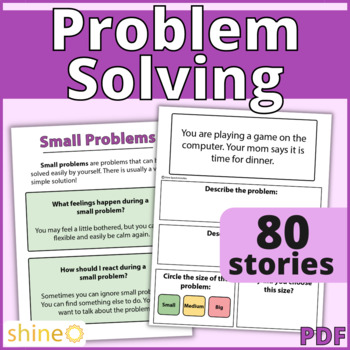
Problem Solving Social Skills Scenarios , Problems Solutions Perspective Taking

- Easel Activity

Social Stories Problem Solving Strategies Scenarios & Social Skills Activities

Problem Solving Scenarios | Social Skills Activities for Teens

Problem Solving Scenarios | Social Skills Activity

Social Skills Social Problem Solving Scenarios for Older Students BUNDLE
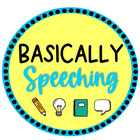
Carnival Social Skills Activities & Games - Problem Solving Scenarios

Social Skills Activities | Social Problem Solving Scenarios | Back To School

Scenario Cards For Social Skills Problem Solving & Friendship
- Google Drive™ folder

Social Skills Problem Solving Activities & Scenarios Bingo for Self Regulation
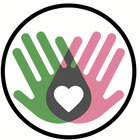
Social Communication Life Skills Problem Solving Scenarios for Speech Therapy

Self-Advocacy Life Skills Worksheet Activities & Social Problem Solving Scenarios
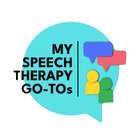
Problem Solving Scenarios Activity | Social Skills for Teens
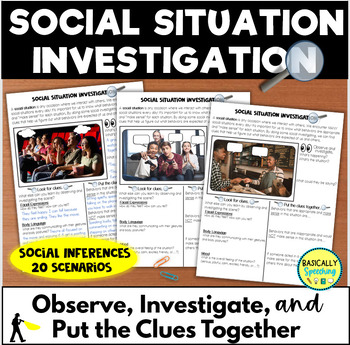
Social Skills Social Problem Solving Scenarios Making Social Inferences
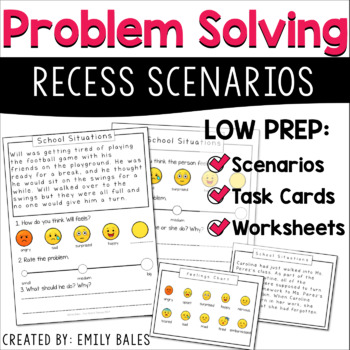
Social Skills l Social Problem Solving Scenarios : Recess

Social Inferencing Middle School Social Skills Autism Problem Solving Scenarios

Self-Advocacy Skills BUNDLE | Social Problem Solving Worksheets & Scenario Cards
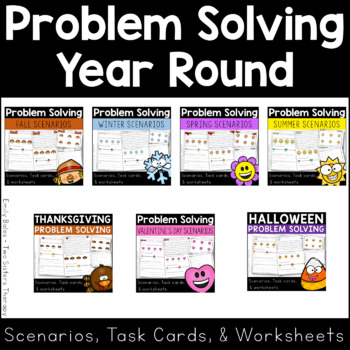
Social Skills Problem Solving Scenarios SEASONAL BUNDLE
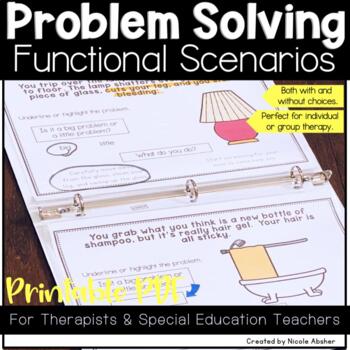
Social Skills Problem Solving Scenarios Printable PDF for Speech Therapy

Social Skills Problem - Solving Scenario Cards for Fall, Autumn, and Halloween
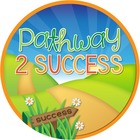
Thanksgiving Social Scenarios - Pragmatic Skills and Problem Solving

- Internet Activities
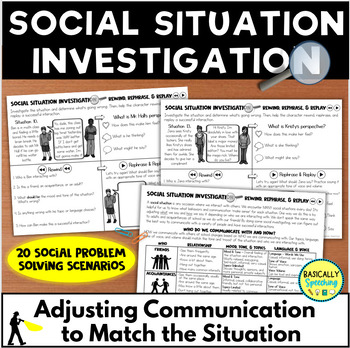
Social Problem Solving Scenarios Adjusting Social Skills in Social Situations

Summer Problem Solving Social Skills Scenarios
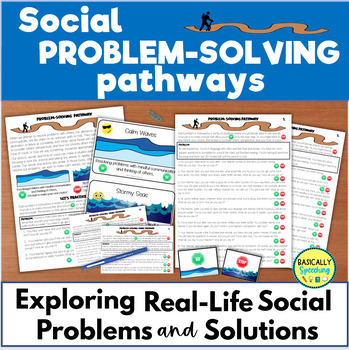
Social Skills Activity, Real Life Social Problem Solving Scenarios

Social Skills Problem Solving Scenarios Boom Card Activities for Speech Therapy
- We're hiring
- Help & FAQ
- Privacy policy
- Student privacy
- Terms of service
- Tell us what you think
Learn how WRTS and MBRTS are helping with COVID-19. Read here .
Read Our Blog

Social Skills Activities that Teach Kids Problem-Solving
September 22 , 2021.
Social skills activities are important for children of all abilities. With this in mind, We Rock the Spectrum’s Social Skills Blog Series aims to provide insight into activities and practical tips that help instill social skills in children. In this article, we focus on the importance of problem-solving skills in children and introduce five fun and educational activities that can enhance their problem-solving skill set.
Autism Spectrum Disorder is a developmental disability in which children find it difficult to socialize and interact with others. Although autism comes in a variety of forms, many
kids have difficulty developing problem-solving skills. The combination of diminished communication, emotional, and self-regulation skills, all contribute to the child’s reduced skills. To be able to become well-rounded individuals, children of all abilities need to be given the opportunity and resources to learn proper problem-solving skills so that they can face challenges head-on later in life. With this in mind, we have put together a guide on the importance of problem-solving skills for both neurotypical children and children with autism.
Why is Problem-Solving Important?
Problem-solving deals with the ability to make decisions in tough or challenging situations. Children of all abilities need to learn how to properly handle each situation with problem-solving in order to become more independent and resilient. Having good problem-solving skills allow children to gain the patience and self-confidence they need to develop into capable individuals.

Problem-solving activities help children develop the skills they need to efficiently and effectively deal with complex issues and situations. In life, children will run into a variety of situations with differing contexts. Having the proper problem-solving skill set will allow children to learn how to handle every situation with ease. Once a child is able to effectively problem-solve, they will be able to better navigate their own personal problems and those of others as well. Additionally, a child will be able to identify a problem, develop different solutions, test different solutions, and analyze the results.
It is essential for parents or guardians to help boost problem-solving skills through a variety of sensory strategies. Here is a list of 5 fun activities that will teach children of all abilities how to build their problem-solving skills.
5 Activities that Teach Problem Solving
1. problems in a jar.
Problems in a Jar is a fun and creative way for children to explore different situations that can occur in the real world. This activity is designed to help kids generate solutions from one problem or circumstance. To begin, an adult will write one situation on a small sheet of paper, fold it, and place it in a jar. This continues until the jar is full. The child then picks a paper and reads off the problem. He/she must then come up with the best solution that solves the challenging scenario. This helps children think thoroughly about each possible solution independently.
2. Scavenger Hunt
Everyone loves a game of scavenger hunt! This group activity prompts children’s deduction skills based on clues and hints, which in turn, enhances their problem-solving skills. To start, divide children into groups of 2-3 and have them come up with a plan on which members look for which items. Children can also brainstorm together on where each item is located. This helps kids work together towards one goal while also nourishing their communication. Parents can also reward kids with small treats for every item they find on the scavenger hunt.
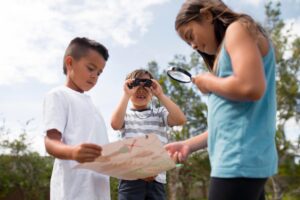
3. Impromptu Skits
Impromptu skits are a fun and engaging way for kids to think independently and with quick reactions. In this activity, children are given one situation wherein they have to reenact how the situation unfolds and how to solve the issue. This allows children to think about how to deal with each situation and see how it can be solved efficiently. After the skit, ask the children to explain their thought processes and correct them if there were any actions that were unnecessary. Children watching the skit will also be able to learn and understand how to best act in certain circumstances.
Puzzles are one of the best ways a child can stimulate their mind. Puzzles have multiple pieces that are all jumbled together. To solve a puzzle, children need to sort the pieces out and place them in their proper areas to be able to put the puzzle back together. This helps children develop memory recall and thought organization. To start off easy, children can work on puzzles with fewer pieces. Once they get the hang of it, they can move on to more difficult and complex puzzles to build their skill set.
5. Play With A Purpose TM
Having a space where your children will feel safe experimenting is vital to developing problem-solving skills quickly. We Rock the Spectrum’s Play With A Purpose™ stimulates and exercises a child’s sight, smell, taste, hearing, touch, vestibular system, and proprioception through positive physical, emotional, and social development. At We Rock the Spectrum, kids are able to play and interact together through arts and crafts, classes, our sensory equipment , and more to strengthen their problem-solving skills in an inclusive, sensory-safe environment.
Key Takeaways
Equipping all children with the proper problem-solving tools and resources at an early age will ensure they develop the skills they need to become versatile individuals. Children who are able to hone their problem-solving skills at their most important phase of development will be able to become more independent and know how to acclimate best to a multitude of situations in the long run. We Rock the Spectrum is a kids gym franchise that offers a wide range of fun and inclusive problem-solving activities through its specialized sensory equipment and Play With A Purpose™ program. Discover more about our mission by getting in touch with us today !
Autism Awareness
Autism resources, birthday parties, classes for kids, dream with dina, our partners, parent's corner, resources team, rockin' events, schools out program, social skills groups, uncategorized, we recommend, we rock care, we rock tarzana, why we rock, may (2023) 1, february (2023) 1, october (2022) 2, september (2022) 15, august (2022) 12, june (2022) 1, february (2022) 1, september (2021) 1, july (2021) 1, march (2021) 1, february (2021) 11, december (2020) 2, june (2020) 1, may (2020) 1, april (2020) 3, march (2020) 4, february (2020) 3, january (2020) 2, december (2019) 2, september (2019) 1, july (2019) 1, may (2019) 1, march (2019) 2, february (2019) 2, august (2018) 1, july (2018) 2, may (2018) 1, february (2018) 1, december (2017) 1, october (2017) 5, august (2017) 2, july (2017) 7, june (2017) 3, may (2017) 3, march (2017) 3, february (2017) 1, january (2017) 2, december (2016) 4, november (2016) 3, july (2016) 1, april (2016) 2, march (2016) 2, february (2016) 2, january (2016) 1, october (2015) 4, september (2015) 4, august (2015) 4, may (2015) 2, january (2015) 1, december (2014) 3, november (2014) 34, october (2014) 4.
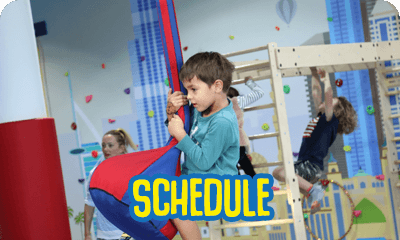
Special Educator Academy
Free resources, how social problem solving and social skills deficits in autism impact behavior.
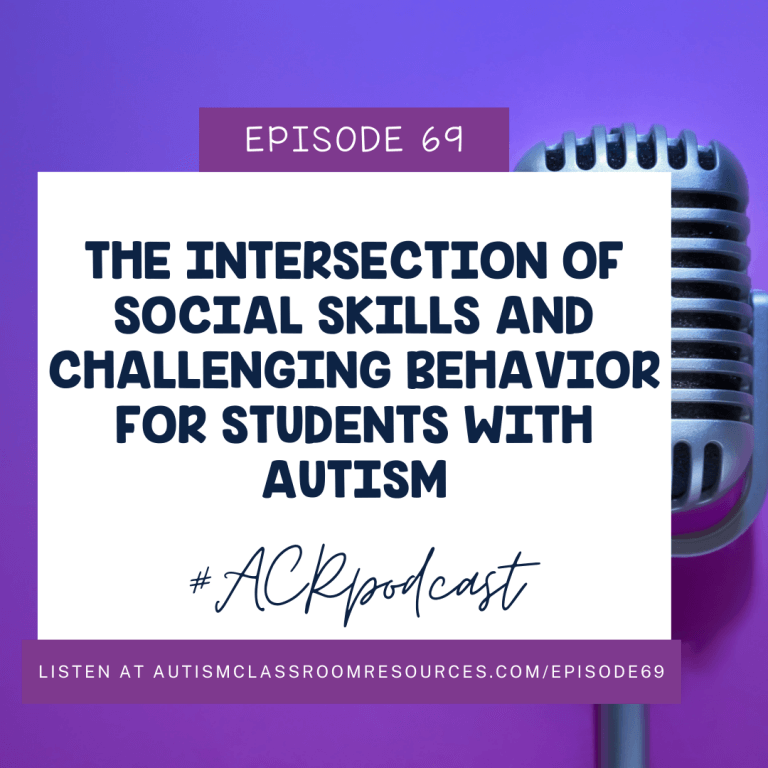
Sharing is caring!
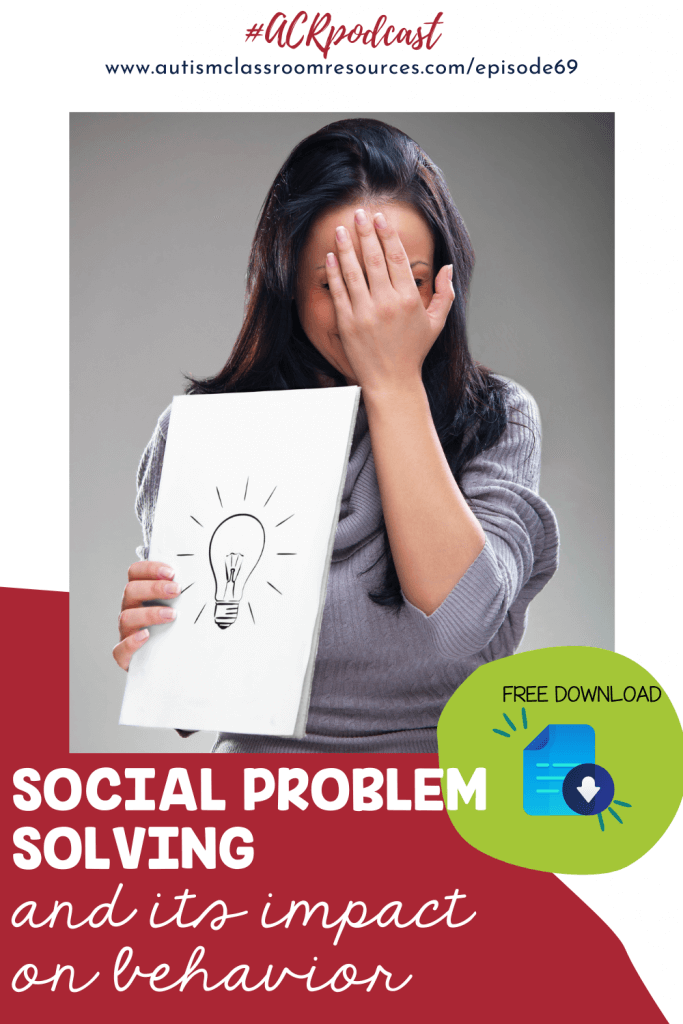
In this episode, I am exploring how social skills deficits, and specifically difficulties with social problem solving, impact the behavior of students with autism, particularly those who are working in general education classrooms. One of the areas that I see many students struggle with in schools is how to handle those situations that occur in recess, at lunch, in group assignments or other unstructured times when something unexpected happens. Those are the times that our students with ASD may respond in a way that makes sense to them, but may not always make sense to those around them.
Social competence, which is how I often refer to the larger approach to social skills, is a very huge deal. It encompasses a lot of different skills and abilities. Some of these are specific, definable skills. For instance, when to say hello to someone. But others involve more esoteric, less easily observed skills.
Episode 69 Highlights
In this episode, I’m talking about how deficits in social problem solving puts our students at risk for negative behavior.
I will also talk about why we need to look at social skills and social problem solving as part of our functional behavior assessment .
And why we need to incorporate social problem solving instruction into our students’ curriculum to prevent challenging behavioral issues.
Finally, I’ve got a free tool that to download in the post for this episode that can help to remind them of some social problem solving strategies.
Grab Your Free Option Cards And Check Out The Academy
Come join the Academy and check out the Social Skills course. Grab a free 7-day free trial with the button below.

This week, I am exploring how social skills deficits, and specifically difficulties with social problem solving, impact the behavior of students with autism, particularly those who are working in general education classrooms. One of the areas that I see many students struggle with in schools is how to handle those situations that occur in recess, at lunch, in group assignments or other unstructured times when something unexpected happens. Those are the times that our students with ASD may respond in a way that makes sense to them, but may not always make sense to those around them.
The Student In the Gym
For instance, a student who found himself in a gym locker room unsupervised. Other kids were teasing him and giving him a hard time. He was feeling threatened and wanted them to stop. But he didn’t know how to remove himself from the situation or ask them to stop. He didn’t have the skill or know the right thing to do. So, he said something threatening that he had heard in a movie when someone was feeling uncomfortable. He told them he would come back and beat them up. They left him alone (so it worked), but they also told the principal and he was suspended. Knowing him, he had no intention to act upon that threat. But the other students and administrators wouldn’t know that.
It was poor social problem solving on his part. He didn’t know how to ask them to leave him alone or remove himself from the situation in a more appropriate way. He didn’t have social skills at his finger tips for handling that situation.
But he also couldn’t figure out why they were teasing him and how to address it. He didn’t have the ability interpret what they might be thinking. He simply didn’t have good social problem solving for the situation. And his behavior got him into trouble.
In this episode, I’m talking about how deficits in social problem solving puts our students at risk for negative behavior.
And why we need to incorporate social problem solving instruction into our students’ curriculum to prevent challenging behavioral issues.
Finally, I’ve got a free tool that to download in the post for this episode that can help to remind them of some social problem solving strategies. You can find that at autismclassroomresources.com/episode69.
So let’s get started.
The Impact of Social Problem Solving on Behavior
Students on the spectrum often have difficulty interpreting others’ behavior, predicting what others might be thinking, and determining that right action to take based on particular situations. They often struggle with reading the nonverbal cues of body language and tone of voice. And all of that together means that they can have difficulty knowing how to respond in social situations.
Like the student in the gym, that means that the way they respond to situations may not be the best options. These are students whose challenging behaviors are often more esoteric than just aggression. It might be categorized as a “meltdown.” Or it might be a group of behaviors that get conveyed as being rude, uncommunicative, shutting down, refusing to participate in activities, etc.
Sometimes these behaviors look just rude or antisocial rather than being a result of not being able to “read the room” or understand the social context. But they also sometimes lead to some big social misunderstanding that can get these students into bigger trouble.
The Importance of Social Problem Solving in Behavior Assessment and Support
Given the impact that social problem solving deficits can have on these students’ behavior, it’s critical that we address them in our assessments and interventions. That leads to two avenues.
In the FBA, we need to include a focus on their social skills and problem solving. We probably don’t need a formal assessment tool. But in our interviews and observations, we should be looking for how the student manages in social situations.
Then, in our interventions, we should be including strategies for addressing social problem solving. These are critical replacement skills given that some of the challenging behaviors may be the result of poor social problem solving and deficits in social skills. And we need to make sure that this training is intensive and not just happening as needed. If students are demonstrating challenging behavior, they need explicit interventions.
Teaching Social Problem Solving to Prevent Challenging Behavior
If the student’s behavior does not rise to the level of needing an FBA (yet), then we should be thinking about how we can prevent that from happening. Many of our students on general education standards don’t get social skills instruction because it isn’t part of their academic curriculum. But they will struggle in the long run without it. So we need to make it a priority. So here are 2 strategies that are fairly easy to implement in the classroom that can help.
Social Narratives, Role Playing, Reinforcement
Social narratives are one strategy that we can use to teach our students how to solve social problems. Narratives are like Social Stories™️ and are designed to describe social situations. The most important component of social narratives for these students are that they should highlight others’ perspectives of the social situation. They should also present options to the student about how to handle the situation and how those actions might be interpreted by others.
Social narratives are also used in combination with other interventions. They aren’t a quick fix that works on their own. I have had some students who respond really well to them. Others who didn’t respond at all. Typically, they have worked as a great way to introduce information to the students. But they aren’t necessarily the behavior change agent for instruction. That is going to take practice.
For practice we need to do role playing, practice, and feedback. We can use video modeling. Students can practice with others or with adults. And we need to reinforce them. So there is a lot of explicit instruction that needs to happen as well as part of a social skills curriculum. Tools such as Michelle Garcia Winner’s Social Thinking and Scott Bellini’s Building Social Relationships are both good resources for these.
Option Cards
And that brings me to a second tool that I wanted to highlight in this episode. Option cards are simply visual supports that remind students of what their options are. You know that student who always calls out whenever he needs help? He doesn’t know to wait his turn. Or he doesn’t know to ask a friend. And instead he’s always calling out in class and interrupting.
Option cards are a way of reminding him what he could do instead. So in the case of the interrupting student, you might have an option card that says, If I don’t know what to do, I could raise my hand and ask for help, or I could ask a friend. You can tape it to his desk or put it in his pocket or notebook as a reminder.
You can also use them to help prevent more significant challenging behaviors. So some students I’ve worked with have an option card that says, “If I get upset, I can ask for a break or get a fidget.” I’ve had option cards for students during PE that said, “If I lose the game, I could congratulate the other team or go get a drink of water.” The second option may not be the most socially appropriate, but it’s better than screaming at the other team and denying that they won.
And I have a free option card that you can download in the resource library. You can sign up and grab it at autismclassroomresources.com/episode69.
Other Tools
Obviously there are tons of other tools that we can use to address social problem solving, like contingency maps , some of the self-regulation tools I talked about in episode 67 and social skills instructional strategies. But the key is that we need to be addressing these issues for these students. Often times we forget that they need this as explicit instruction. And it’s not included in the general education academic curriculum. We need to advocate for the needs for these students to learn these skills to avoid behavior but also to promote success within and after school.
So head over to the website page for this episode at autismclassroomresources.com/episode69 to grab your free option cards and contingency maps. And if you are interested in learning more about how to teach social competency, we have a whole course on teaching the specific skills for all different populations, including autism, in the Special Educator Academy. So, come join us for a 7-day free trial of the Academy at specialeducatoracademy.com
And I would love to hear about how you teach social problem solving to your students. So if you are an educator, hop over to the free Facebook group at specialeducatorsconnection.com and share.
Never Miss An Episode!

Grab a Free Resource
(and get free tips by email)

Training & Professional Development
- On-Site Training
- Virtual Training
Privacy Policy
Disclosures and copyright.
- Core Beliefs
Unlock Unlimited Access to Our FREE Resource Library!
Welcome to an exclusive collection designed just for you!
Our library is packed with carefully curated printable resources and videos tailored to make your journey as a special educator or homeschooling family smoother and more productive.


IMAGES
VIDEO
COMMENTS
Here are 5 steps to help kids learn social problem solving skills: 1. Teach kids to communicate their feelings. Being able to openly and respectfully share emotions is a foundational element to social problem solving. Teaching I statements can be a simple and effective way to kids to share their feelings. With an I statement, kids will state ...
What is Social Problem Solving? Social problem solving is the cognitive-behavioral process that an individual goes through to solve a social problem. Typically, there are five steps within this process: 1. Identifying that the problem exists: Recognizing there is a problem that needs to be solved. 2. Defining the problem: Naming and describing ...
Social problem solving is a skill that develops during the early years of school. It is the process and strategies used to analyse, understand, and respond to everyday problems, decision making, and conflicts. Social problem solving is often fostered intuitively through interactions with others. Some students, including those on the autism ...
The goal of social skills training is to teach people about verbal and nonverbal behaviors that are involved in typical social interactions ("Social," n.d.). ... G., & Kazantzis, N. (2008). Social problem-solving skills for adults with mild intellectual disability: A multiple case study. Behaviour Change, 25(2), 97-108. Cognitive ...
teaching of social skills . Overview and rationale . Positive relationships underpin all effective classroom management practices. This resource is the fifth component in a suite of resources ... • explicitly teach social skills and problem-solving skills. The explicit teaching of social skills is one of the many effective classroom
become a common feature of programs designed to prevent and remediate discipline problems. (Bear, 1998). Social problem solving skills are skills that students "use to analyze, understand, and prepare to respond to everyday problems, decisions, and conflicts" (Elias & Clabby, 1988, p. 53). Learning these skills helps students to improve ...
Research suggests that problem-solving skills help buffer against distress when people are experiencing stressful events in life. With PLAN, we have discovered that equipping our students with problem-solving skills is a strong predictor of student agency and social action. By teaching a deliberate social problem-solving strategy, we nurture ...
Here is a great article, Class Meetings: A Democratic Approach to Classroom Management , from Education World that describes the purpose and attributes of a class meeting. 9. Explicit instruction. Finally, teachers can carve out a time in their curriculum to directly teach social skills to their students.
Teaching social problem-solving skills is a vital aspect of elementary education. By prioritizing social-emotional learning and incorporating strategies to develop these skills, teachers can empower students to navigate social challenges effectively and build positive relationships. Start your EverydaySpeech Free trial today to access a wide ...
Social problem solving skills are essential for individuals of all ages. These skills enable us to navigate social situations, resolve conflicts, and make responsible decisions. Whether you are a parent, teacher, or therapist, teaching social problem solving can greatly benefit the individuals you work with. In this blog post, we will explore ...
6. Imitate and Model Other Students. Much like with video modeling, kids often use imitation behaviors to learn new social skills. When you ask them to practice these techniques in the classroom, you can create situations where students model body language and other behaviors you want to encourage.
The approach known as Social Decision Making and Social Problem Solving (SDM/SPS) has been utilized since the late 1970s to promote the development of social-emotional skills in students, which is now also being applied in academic settings. This approach is rooted in the work of John Dewey (1933) and has been extensively studied and ...
Here are the steps to problem-solving: . Identify the problem. Just stating the problem out loud can make a big difference for kids who are feeling stuck. Help your child state the problem, such as, "You don't have anyone to play with at recess," or "You aren't sure if you should take the advanced math class."
Resolve Conflicts. In addition to increased social and emotional skills like self-efficacy and goal-setting, problem-solving skills teach students how to cooperate with others and work through disagreements and conflicts. Problem-solving promotes "thinking outside the box" and approaching a conflict by searching for different solutions.
Social Problem Solving - Preschoolers. With our support, children can work together to find solutions to their problems. Conflicts between peers are typical in most preschool classrooms. At this age, children are still learning to understand how their actions affect others, so it is hard for them to come up with fair solutions to their conflicts.
Teach within a specific context. Teach problem-solving skills in the context in which they will be used by students (e.g., mole fraction calculations in a chemistry course). Use real-life problems in explanations, examples, and exams. Do not teach problem solving as an independent, abstract skill. Help students understand the problem. In order ...
Social, Emotional & Academic Learning Resources Across all Ages. The Social Thinking Methodologyhas been a guiding resource for schools, clinics, individuals, and families around the world for more than 25 years. Our work supports individuals' social, emotional & academic learning, whether neurotypical or Neurodivergent, with or without diagnosis.
Social skills are those communication, problem-solving, decision making, self-management, and peer relations abilities that allow one to initiate and maintain positive social relationships with others. ... Essentially, we teach social skills like we teach academics. Assess the level of the students, prepare the materials, introduce the material ...
Teaching Social Problem-Solving Skills. Model and Explain: Children learn by example. Model effective problem-solving skills in your own interactions, and explain your thought process. For instance, if you encounter a disagreement with a colleague, share how you addressed the issue in a respectful and constructive manner. ...
VBI is an empirically validated intervention for teaching social skills such as communication (Cihak et al., 2012; Plavnick & Ferreri, 2011), play (MacDonald et al., 2005), conversation and social interaction skills (Charlop & Milstein, 1989; Taylor et al., 1999), social problem solving and making friends (Plavnick et al., 2013), and ...
Build skills for social problem-solving by getting your students talking! Use these 100 task cards to highlight social scenarios and situations that teach social emotional skills at the very same time. Your students can discuss and identify how they would solve each situation. The cards are organized into five different sets that target different situations: With friends, with family, in the ...
Here are several games (some I've purchase and some I've developed myself) that target these critical social emotional learning skills: 1. Social Problem Solving Board Game. Why It's Important: Social problem-solving is our ability to understand a social situation and use reasoning to deal with it in the most socially appropriate way. We ...
Create a free account to gain full access to the website. Save & Organize Resources. See State Standards. Manage Classes & Assignments. Sync with Google Classroom. Create Lessons. Customized Dashboard. Find lessons on Social Problem Solving for all grades. Free interactive resources and activities for the classroom and home.
These social problem solving scenarios and social skills activities will help children who struggle with handling problems in a calm, effective way by teaching them calming and problem solving strategies. This is a social story with activities, a coloring book, mini story set and an animated PowerPoint version!
Problem-solving skills are a critical ability for children to begin acquiring, as this skill set determines a child's success in more than just academics. Proficient problem-solving abilities will contribute to the child's social interactions and future personal and professional relationships that they will develop within the next decade of ...
Learn 11 social skills that you should teach your kids, discover why they're important, and review strategies for teaching them. ... Problem-Solving. Social problem-solving is an important skill ...
2. Scavenger Hunt. Everyone loves a game of scavenger hunt! This group activity prompts children's deduction skills based on clues and hints, which in turn, enhances their problem-solving skills. To start, divide children into groups of 2-3 and have them come up with a plan on which members look for which items.
Given the impact that social problem solving deficits can have on these students' behavior, it's critical that we address them in our assessments and interventions. That leads to two avenues. In the FBA, we need to include a focus on their social skills and problem solving. We probably don't need a formal assessment tool.